Carlos R. Baiz, chemistry, University of Texas at Austin – Molecular Dynamics at Heterogeneous Oil-Water Interfaces and a New Approach to Addressing the Mental Health Needs of Graduate Students
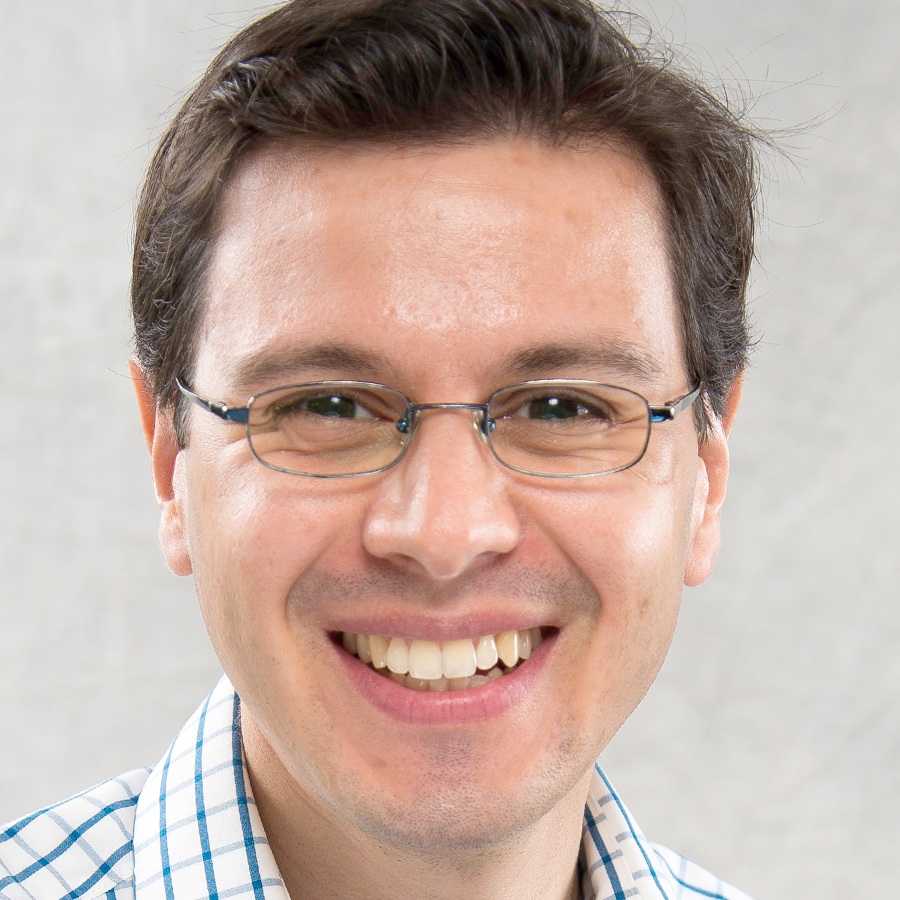 “Surfactants (soaps) are used in everyday household and industrial applications -- from healthcare to food production -- and contain mixtures of thousands of different molecules. These mixtures produce highly heterogeneous interfaces between water and oil phases. This project seeks to investigate the molecular properties and interfacial environments of these heterogeneous interfaces in their full real-world complexity using a combination of ultrafast spectroscopy and molecular dynamics simulations. The goal of this project is to quantify molecular interactions at the oil/water interface and develop structure and composition-based models that will accelerate the currently slow, costly endeavor of developing compositions for industrial and laboratory applications. The educational component of this project will implement department-wide initiatives to address the well-being and mental health needs of graduate students, which can affect quality of life, academic achievement, and future employment. As much as 39% of STEM graduate students experience mild to moderate depression. The program will be a collaborative effort between students, faculty, counseling and mental health services staff, and department leadership.”
“Surfactants (soaps) are used in everyday household and industrial applications -- from healthcare to food production -- and contain mixtures of thousands of different molecules. These mixtures produce highly heterogeneous interfaces between water and oil phases. This project seeks to investigate the molecular properties and interfacial environments of these heterogeneous interfaces in their full real-world complexity using a combination of ultrafast spectroscopy and molecular dynamics simulations. The goal of this project is to quantify molecular interactions at the oil/water interface and develop structure and composition-based models that will accelerate the currently slow, costly endeavor of developing compositions for industrial and laboratory applications. The educational component of this project will implement department-wide initiatives to address the well-being and mental health needs of graduate students, which can affect quality of life, academic achievement, and future employment. As much as 39% of STEM graduate students experience mild to moderate depression. The program will be a collaborative effort between students, faculty, counseling and mental health services staff, and department leadership.”
Kateri H. DuBay, chemistry, University of Virginia – Teaching Entropy and Modeling the Sequence-Determinants of Surface-Initiated Copolymerizations
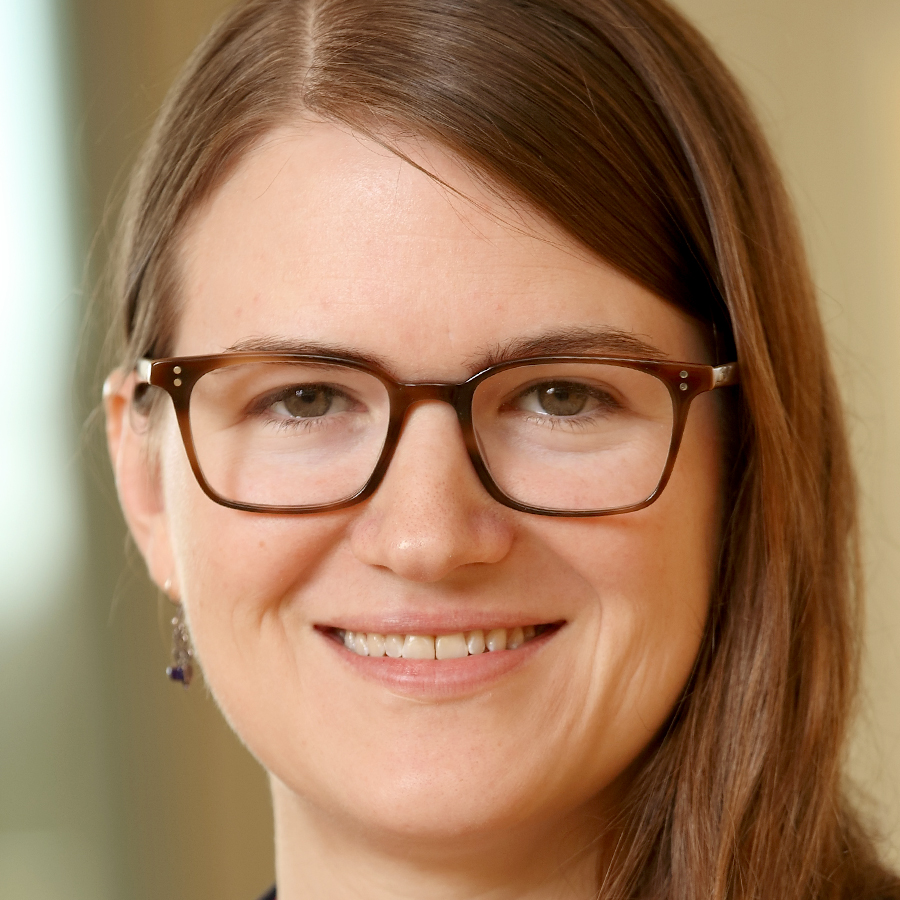 “The secret to designing advanced materials for applications ranging from electronics to water purification to environmental sensing lies in the optimization of their surfaces, as the surface is where a material interacts with the world around it and performs many of its valuable functions. Coating a surface with a polymer brush – a collection of short chain-like molecules that extend out from a surface like brush bristles – is a particularly promising route toward designing surface function. Although many polymer brushes are composed of a single type of monomer, their properties could be improved by combining different types of monomers, especially if the locations of each type within the chains could be controlled. Using simple models designed to simulate the growth of polymer brushes from various surfaces, we will investigate how the reaction conditions influence the placement of different monomers within these polymer brushes. In my educational plan, I intend to utilize entropy’s simplicity, elegance, and explanatory power to attract first-year undergraduate students (majors and non-majors) to STEM through the design and teaching of a new general education course. I will also work to improve how entropy is taught at the graduate level through the development of an online professional learning community for faculty teaching graduate-level statistical mechanics.”
“The secret to designing advanced materials for applications ranging from electronics to water purification to environmental sensing lies in the optimization of their surfaces, as the surface is where a material interacts with the world around it and performs many of its valuable functions. Coating a surface with a polymer brush – a collection of short chain-like molecules that extend out from a surface like brush bristles – is a particularly promising route toward designing surface function. Although many polymer brushes are composed of a single type of monomer, their properties could be improved by combining different types of monomers, especially if the locations of each type within the chains could be controlled. Using simple models designed to simulate the growth of polymer brushes from various surfaces, we will investigate how the reaction conditions influence the placement of different monomers within these polymer brushes. In my educational plan, I intend to utilize entropy’s simplicity, elegance, and explanatory power to attract first-year undergraduate students (majors and non-majors) to STEM through the design and teaching of a new general education course. I will also work to improve how entropy is taught at the graduate level through the development of an online professional learning community for faculty teaching graduate-level statistical mechanics.”
Keary M. Engle, chemistry, Scripps Research Institute – Catalytic Difunctionalization of Alkenes Using Transient Directing Groups
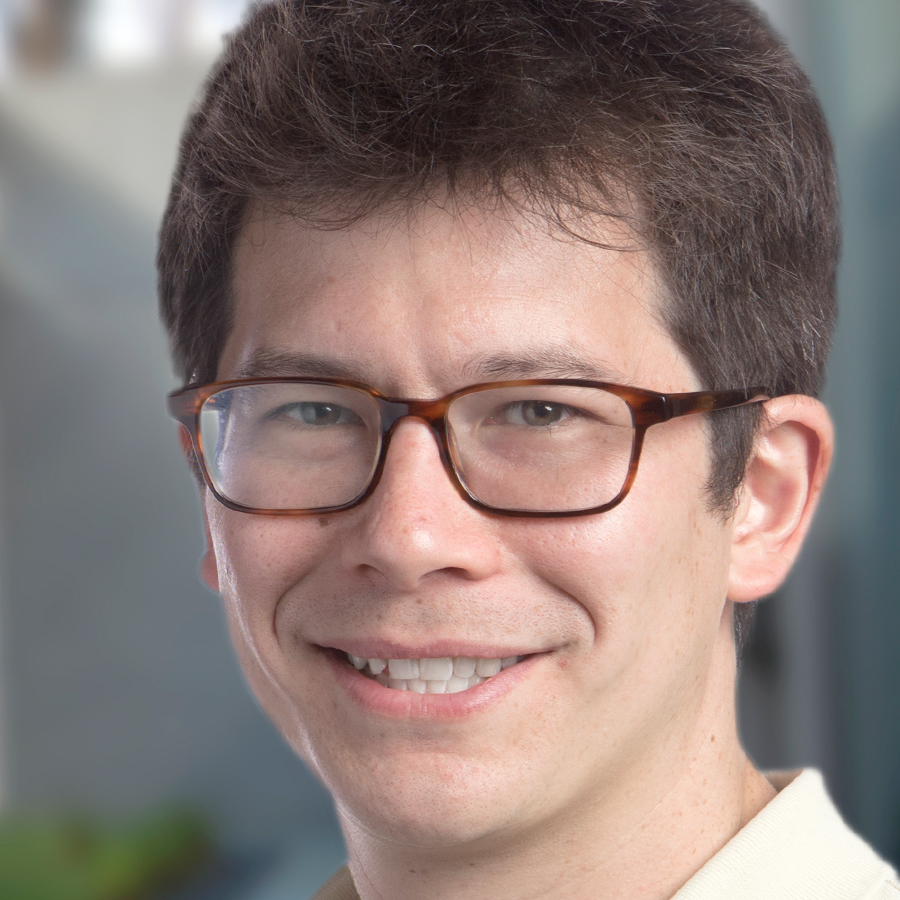 “My research aims to invent new catalytic reactions to convert simple chemical feedstocks into structurally complex building blocks, with the overall goal of simplifying the production of pharmaceuticals and other types of molecules that are essential to modern society. Using two different types of catalysts operating in synergy with one another in order to achieve unprecedented levels of selectivity and efficiency in the functionalization of alkenes -- a widely available family of synthetic starting materials -- I hope to reduce the waste, time, and energy typically required for such processes. As co-founder and academic advisor for the North County San Diego Professional and Interdisciplinary Research Enrichment (*NSPIRE) program, which introduces diverse student populations in San Diego County to career and educational opportunities in the biomedical research field, my educational proposal will expand the programmatic offerings of *NSPIRE to include an annual symposium, internship opportunities for community college students, and graduate-level short courses catered to advanced undergraduates. By leveraging empirically validated approaches to recruit and retain students from backgrounds that are historically underrepresented in STEM fields, *NSPIRE seeks to become a new pipeline for enhancing diversity of the STEM workforce in San Diego.”
“My research aims to invent new catalytic reactions to convert simple chemical feedstocks into structurally complex building blocks, with the overall goal of simplifying the production of pharmaceuticals and other types of molecules that are essential to modern society. Using two different types of catalysts operating in synergy with one another in order to achieve unprecedented levels of selectivity and efficiency in the functionalization of alkenes -- a widely available family of synthetic starting materials -- I hope to reduce the waste, time, and energy typically required for such processes. As co-founder and academic advisor for the North County San Diego Professional and Interdisciplinary Research Enrichment (*NSPIRE) program, which introduces diverse student populations in San Diego County to career and educational opportunities in the biomedical research field, my educational proposal will expand the programmatic offerings of *NSPIRE to include an annual symposium, internship opportunities for community college students, and graduate-level short courses catered to advanced undergraduates. By leveraging empirically validated approaches to recruit and retain students from backgrounds that are historically underrepresented in STEM fields, *NSPIRE seeks to become a new pipeline for enhancing diversity of the STEM workforce in San Diego.”
Pengfei Huo, chemistry, University of Rochester – Enabling New Chemical Reactivities through Polariton Photochemistry
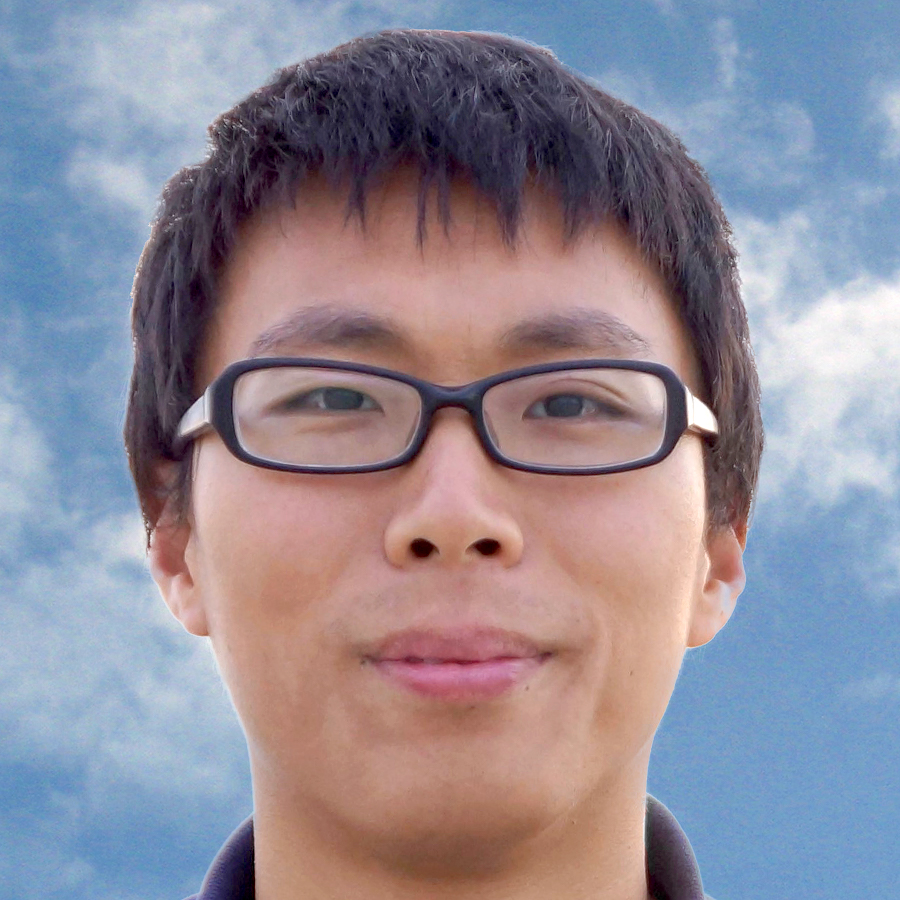 “My group will theoretically investigate new chemical reactivities enabled by coupling molecular systems to the quantized radiation field inside an optical cavity. Coupling molecules to an optical cavity creates a set of new photon-matter hybrid excitations, so-called polaritons. This light-matter hybridization process can significantly modify the potential energy landscape along a given reaction coordinate and reactivities of molecules, opening up new possibilities for unique chemical transformations. As we theoretically investigate the quantum dynamics of such molecule-cavity hybrid systems, unravel the fundamental limit and basic principles in polariton photochemistry, and discover new chemical reactivities enabled by cavity quantum electrodynamics processes, we hope to inspire new principles of chemical reactions that take advantage of intrinsic quantum light-matter interactions and facilitate the quantum leap of chemistry. We envision our investigations will help to provide a fundamental understanding of polariton mediated reactivities and develop new theories that facilitate the merger of quantum optics and photochemistry. I also plan to develop a set of integrated educational components to bridge the knowledge gap between upper-level physical chemistry courses and the fundamental principles of theoretical chemistry, preparing the students with research-level knowledge and skills.”
“My group will theoretically investigate new chemical reactivities enabled by coupling molecular systems to the quantized radiation field inside an optical cavity. Coupling molecules to an optical cavity creates a set of new photon-matter hybrid excitations, so-called polaritons. This light-matter hybridization process can significantly modify the potential energy landscape along a given reaction coordinate and reactivities of molecules, opening up new possibilities for unique chemical transformations. As we theoretically investigate the quantum dynamics of such molecule-cavity hybrid systems, unravel the fundamental limit and basic principles in polariton photochemistry, and discover new chemical reactivities enabled by cavity quantum electrodynamics processes, we hope to inspire new principles of chemical reactions that take advantage of intrinsic quantum light-matter interactions and facilitate the quantum leap of chemistry. We envision our investigations will help to provide a fundamental understanding of polariton mediated reactivities and develop new theories that facilitate the merger of quantum optics and photochemistry. I also plan to develop a set of integrated educational components to bridge the knowledge gap between upper-level physical chemistry courses and the fundamental principles of theoretical chemistry, preparing the students with research-level knowledge and skills.”
Catherine Kealhofer, physics, Williams College – Nonequilibrium Phonon Dynamics in Two-dimensional Materials
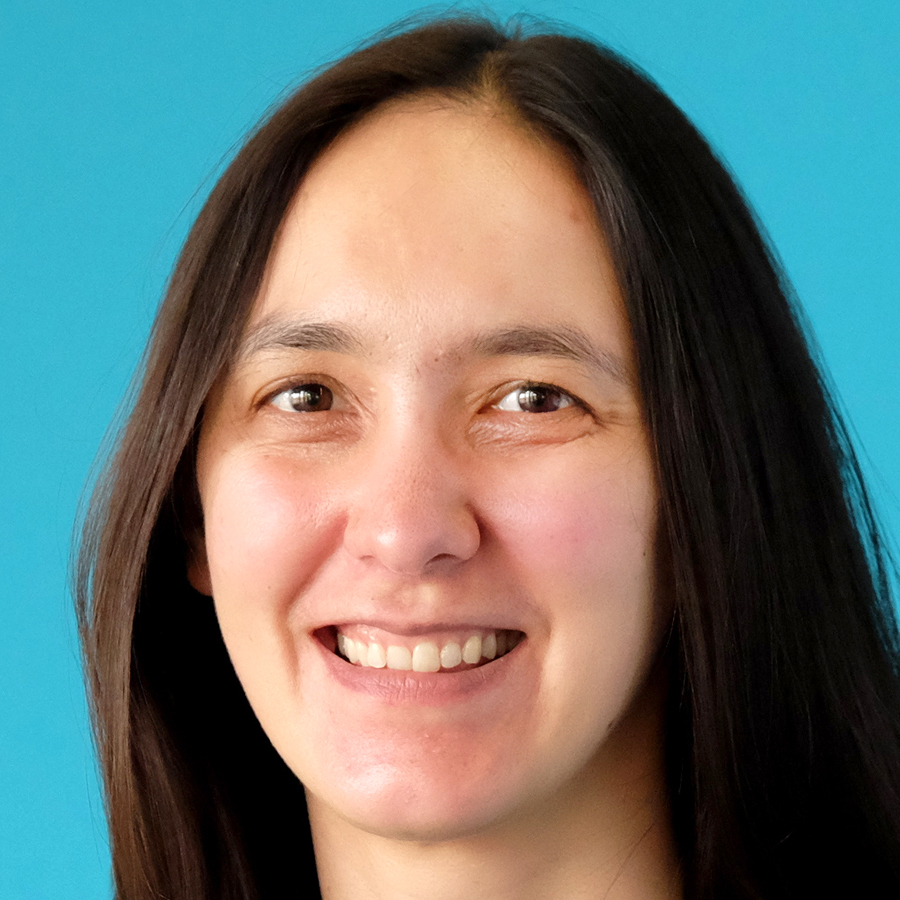 “Our present understanding of the electrical and thermal properties of materials is largely based on macroscopic measurements that do not give access to essential details of electron and phonon interactions. The goal of this research project is to understand how phonons scatter from one another in two-dimensional materials like graphene and the transition metal dichalcogenides, which are being developed for novel electronics applications. To do this, we are building an apparatus for ultrafast electron diffuse scattering, a technique that will allow us to measure how different phonon populations evolve in time after the system is driven out of equilibrium by a short, intense laser pulse. By measuring non-equilibrium phonon dynamics, these experiments will deepen our fundamental understanding of two-dimensional material systems as well as provide insights into design criteria for working with such materials. The educational part of the proposal centers on reading original research literature in a first-year modern physics course, exposing students to the excitement of the scientific process early in their college careers. The aim is for students to develop foundational skills for interpreting research literature that will enrich and deepen their later coursework and research experiences.”
“Our present understanding of the electrical and thermal properties of materials is largely based on macroscopic measurements that do not give access to essential details of electron and phonon interactions. The goal of this research project is to understand how phonons scatter from one another in two-dimensional materials like graphene and the transition metal dichalcogenides, which are being developed for novel electronics applications. To do this, we are building an apparatus for ultrafast electron diffuse scattering, a technique that will allow us to measure how different phonon populations evolve in time after the system is driven out of equilibrium by a short, intense laser pulse. By measuring non-equilibrium phonon dynamics, these experiments will deepen our fundamental understanding of two-dimensional material systems as well as provide insights into design criteria for working with such materials. The educational part of the proposal centers on reading original research literature in a first-year modern physics course, exposing students to the excitement of the scientific process early in their college careers. The aim is for students to develop foundational skills for interpreting research literature that will enrich and deepen their later coursework and research experiences.”
Elena F. Koslover, physics, University of California, San Diego – Physics of Cellular Distribution Networks: Morphology and Transport in the Endoplasmic Reticulum
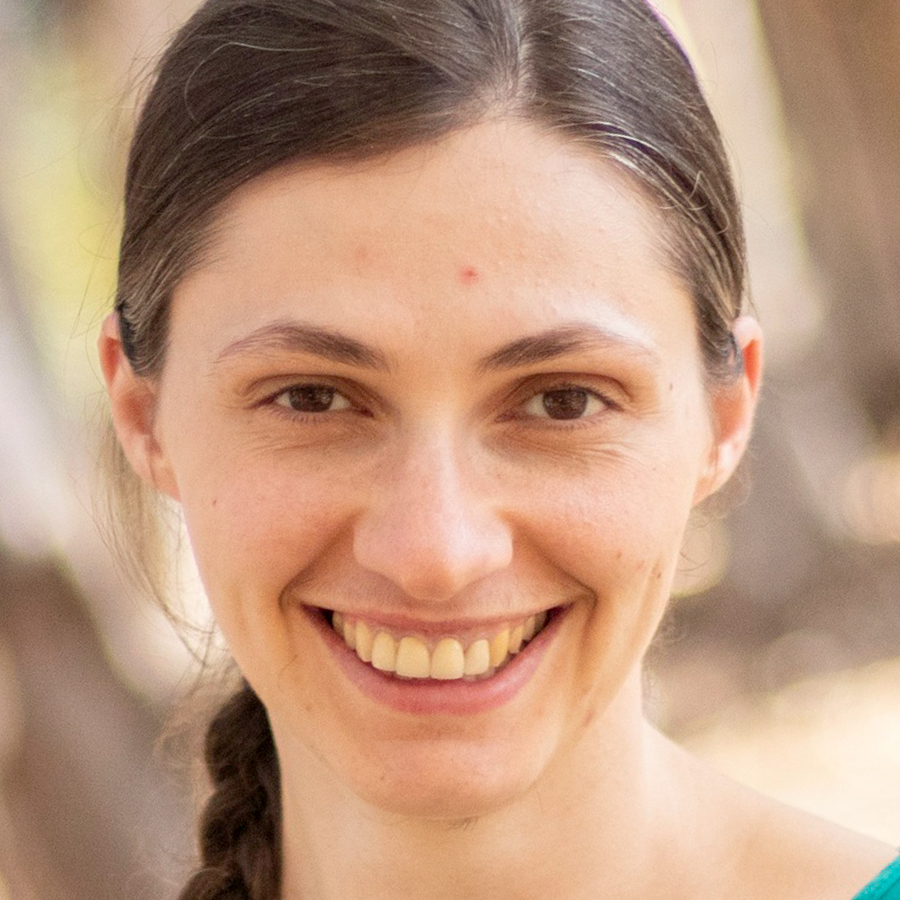 “My group seeks to understand how various components move through the incredibly complex environment inside living cells. The ability of molecules to find each other and trigger the reactions that keep a cell alive relies on their ability to harness various physical mechanisms of motion, including random diffusion, molecular motors, and fluid flows within a cell. We are exploring how complex geometric structures combine with these mechanisms to regulate the efficient transport of molecules between different cellular regions. To this end, we leverage physical models and computer simulations, coupled with live-cell imaging data from collaborating groups. Specifically, we are interested in transport within the extensive network of tubules that form an organelle called the endoplasmic reticulum. This organelle is crucial for moving lipid molecules and ions through the cell, and is the host for important quality control processes that go awry in human diseases such as Parkinson's and diabetes. I am also involved in a large-scale effort to revamp the introductory physics curriculum for life science majors. We are developing modules that leverage biologically important questions to motivate the introduction of basic physics concepts in a way that improves both engagement and retention for biology majors and pre-medical students.”
“My group seeks to understand how various components move through the incredibly complex environment inside living cells. The ability of molecules to find each other and trigger the reactions that keep a cell alive relies on their ability to harness various physical mechanisms of motion, including random diffusion, molecular motors, and fluid flows within a cell. We are exploring how complex geometric structures combine with these mechanisms to regulate the efficient transport of molecules between different cellular regions. To this end, we leverage physical models and computer simulations, coupled with live-cell imaging data from collaborating groups. Specifically, we are interested in transport within the extensive network of tubules that form an organelle called the endoplasmic reticulum. This organelle is crucial for moving lipid molecules and ions through the cell, and is the host for important quality control processes that go awry in human diseases such as Parkinson's and diabetes. I am also involved in a large-scale effort to revamp the introductory physics curriculum for life science majors. We are developing modules that leverage biologically important questions to motivate the introduction of basic physics concepts in a way that improves both engagement and retention for biology majors and pre-medical students.”
Kristin S. Koutmou, chemistry, University of Michigan – Chemical Modifications to mRNA Nucleosides: A New Frontier in Gene Regulation
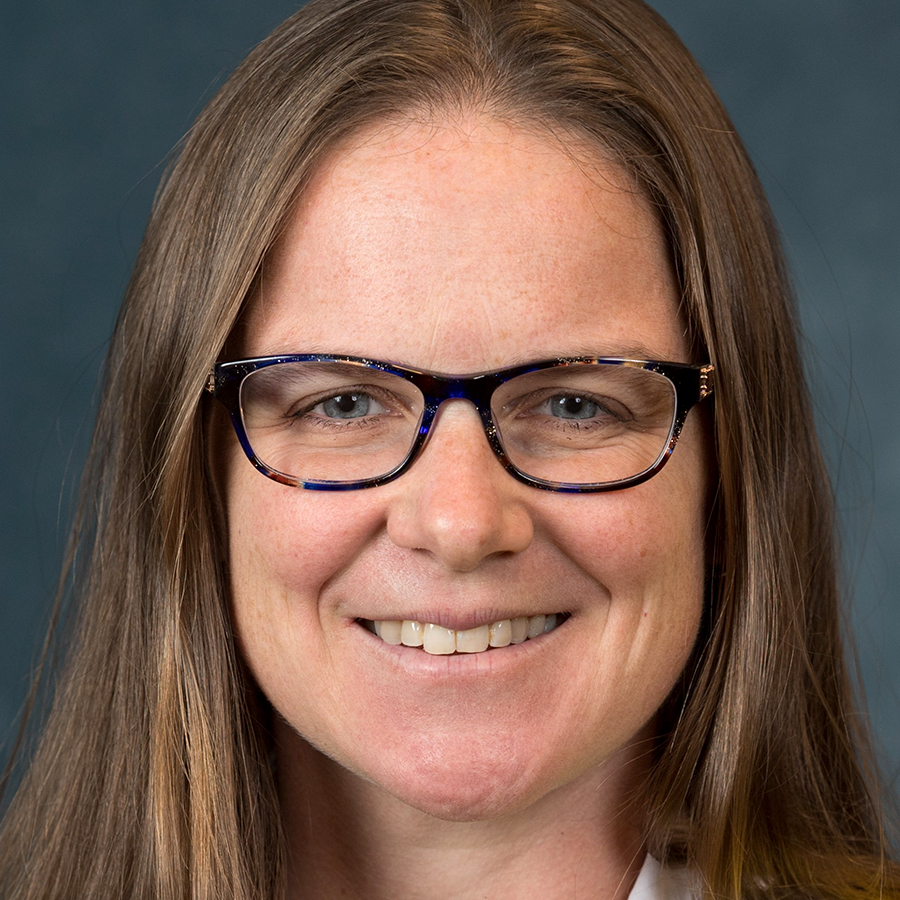 “Cells face the daunting challenge of synthesizing the correct number of proteins at the right time with high fidelity. Messenger RNAs (mRNAs) serve as the blueprints for protein synthesis by the molecular machine the ribosome, and the chemical modification of mRNA presents one potential avenue for cells to regulate protein production. However, it remains unclear how (or, in many cases, if) modifications fundamentally change the functional properties of mRNAs to alter the expression and/or identity of the resulting proteins. Our studies will address these critical knowledge gaps and establish a quantitative and mechanistic basis for understanding how mRNA chemical modifications impact protein synthesis at the molecular level. Concurrently, I will implement an education plan that applies well-documented, effective educational approaches to improve student learning in a large Introductory Biochemistry course. Biochemistry presents substantial challenges for teachers and students because of the large body of knowledge students must learn, and the requirement to form connections between abstract concepts from disparate fields (math, chemistry, physics and biology). To address these obstacles, I will provide educational coaching for instructors, implement structured peer-to-peer learning in course discussion sections, and incorporate active writing practices into the classroom.”
“Cells face the daunting challenge of synthesizing the correct number of proteins at the right time with high fidelity. Messenger RNAs (mRNAs) serve as the blueprints for protein synthesis by the molecular machine the ribosome, and the chemical modification of mRNA presents one potential avenue for cells to regulate protein production. However, it remains unclear how (or, in many cases, if) modifications fundamentally change the functional properties of mRNAs to alter the expression and/or identity of the resulting proteins. Our studies will address these critical knowledge gaps and establish a quantitative and mechanistic basis for understanding how mRNA chemical modifications impact protein synthesis at the molecular level. Concurrently, I will implement an education plan that applies well-documented, effective educational approaches to improve student learning in a large Introductory Biochemistry course. Biochemistry presents substantial challenges for teachers and students because of the large body of knowledge students must learn, and the requirement to form connections between abstract concepts from disparate fields (math, chemistry, physics and biology). To address these obstacles, I will provide educational coaching for instructors, implement structured peer-to-peer learning in course discussion sections, and incorporate active writing practices into the classroom.”
Kah Chun Lau, physics, California State University, Northridge – Data-Driven Solubility Model Development of Concentrated Non-aqueous Electrolytes
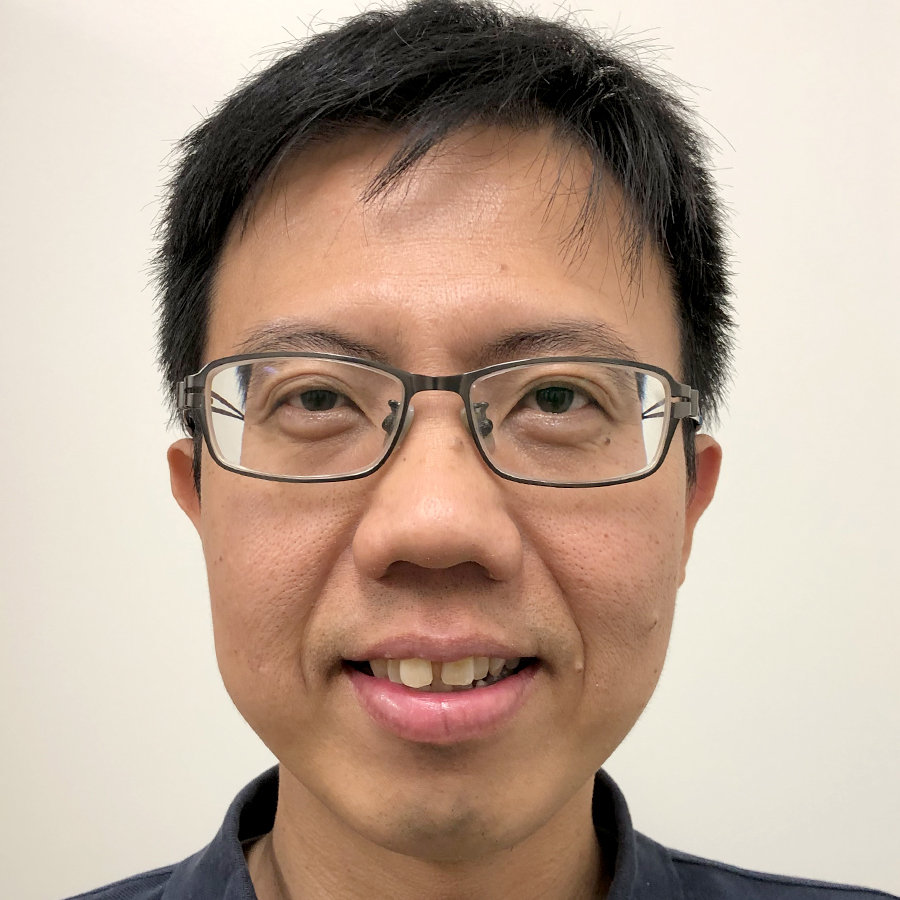 “Solubility is a crucial physicochemical property related to solids and liquids, and the development of theoretical models to predict solubilities of salts and solutes in liquid solvents is important for various scientific disciplines. However, a key challenge is to predict solubility so that we can determine what salt/solvent combinations can form superconcentrated electrolytes. To address this challenge, I propose to develop structure-solubility models for predicting the formation of superconcentrated electrolytes for non-aqueous system based on the structural descriptors of salts and solvents. Our approach is to integrate high-throughput data mining, chemoinformatics modeling, solubility parameters studies and active machine learning methods supported by atomistic simulation. For the education component, I hope my research will help to bring an impact to recent efforts to implement Artificial Intelligence (AI) and Big Data in education across the campus through students’ research experiences. I will implement new course syllabi in our department’s traditional introductory computational physics course and the advanced undergraduate/graduate computational materials theory course to emphasize open-source scientific computing experiences, machine-learning knowledge, data-mining and big-data analytical skills in traditional physics courses.”
“Solubility is a crucial physicochemical property related to solids and liquids, and the development of theoretical models to predict solubilities of salts and solutes in liquid solvents is important for various scientific disciplines. However, a key challenge is to predict solubility so that we can determine what salt/solvent combinations can form superconcentrated electrolytes. To address this challenge, I propose to develop structure-solubility models for predicting the formation of superconcentrated electrolytes for non-aqueous system based on the structural descriptors of salts and solvents. Our approach is to integrate high-throughput data mining, chemoinformatics modeling, solubility parameters studies and active machine learning methods supported by atomistic simulation. For the education component, I hope my research will help to bring an impact to recent efforts to implement Artificial Intelligence (AI) and Big Data in education across the campus through students’ research experiences. I will implement new course syllabi in our department’s traditional introductory computational physics course and the advanced undergraduate/graduate computational materials theory course to emphasize open-source scientific computing experiences, machine-learning knowledge, data-mining and big-data analytical skills in traditional physics courses.”
Frank A. Leibfarth, chemistry, University of North Carolina at Chapel Hill – Organocatalytic Kinetic Resolution Polymerization of Lactones
 “Synthetic polymers protect us from extreme weather, enable prolonged food storage, and help cure disease. While these versatile materials have enabled globalization, they are derived from petrochemical resources and do not degrade, permanently accumulating in landfills, oceans, and the environment. Sustainable polymers that have thermomechanical properties to compete with petroleum-derived plastics offer a promising solution. Our project will seek to discover new degradable plastics through the design of catalysts to selectively polymerize sustainable building blocks. These catalysts will control polymer stereochemistry using selective electrostatic interactions, which will enable a systematic analysis of their structure-property relationships and evaluation of their potential as next-generation sustainable thermoplastics. Understanding the mechanism of stereoselectivity will provide a fundamental understanding of the method and lay the groundwork for its continued improvement and expansion. Our education proposal seeks to increase student learning, content integration ability, and provide a deeper understanding of the authentic practices of science by implementing an integrated, two-semester curricular modernization strategy in undergraduate polymer chemistry. The Polymer Synthesis course will apply a systematic and intensive analysis of primary literature to provide content knowledge while simultaneously teaching students to “think like a scientist.” The Polymer Laboratory course will engage students in a genuine research project.”
“Synthetic polymers protect us from extreme weather, enable prolonged food storage, and help cure disease. While these versatile materials have enabled globalization, they are derived from petrochemical resources and do not degrade, permanently accumulating in landfills, oceans, and the environment. Sustainable polymers that have thermomechanical properties to compete with petroleum-derived plastics offer a promising solution. Our project will seek to discover new degradable plastics through the design of catalysts to selectively polymerize sustainable building blocks. These catalysts will control polymer stereochemistry using selective electrostatic interactions, which will enable a systematic analysis of their structure-property relationships and evaluation of their potential as next-generation sustainable thermoplastics. Understanding the mechanism of stereoselectivity will provide a fundamental understanding of the method and lay the groundwork for its continued improvement and expansion. Our education proposal seeks to increase student learning, content integration ability, and provide a deeper understanding of the authentic practices of science by implementing an integrated, two-semester curricular modernization strategy in undergraduate polymer chemistry. The Polymer Synthesis course will apply a systematic and intensive analysis of primary literature to provide content knowledge while simultaneously teaching students to “think like a scientist.” The Polymer Laboratory course will engage students in a genuine research project.”
Huey-Wen Lin, physics, Michigan State University – Unveiling the Three-Dimensional Structure of Nucleons
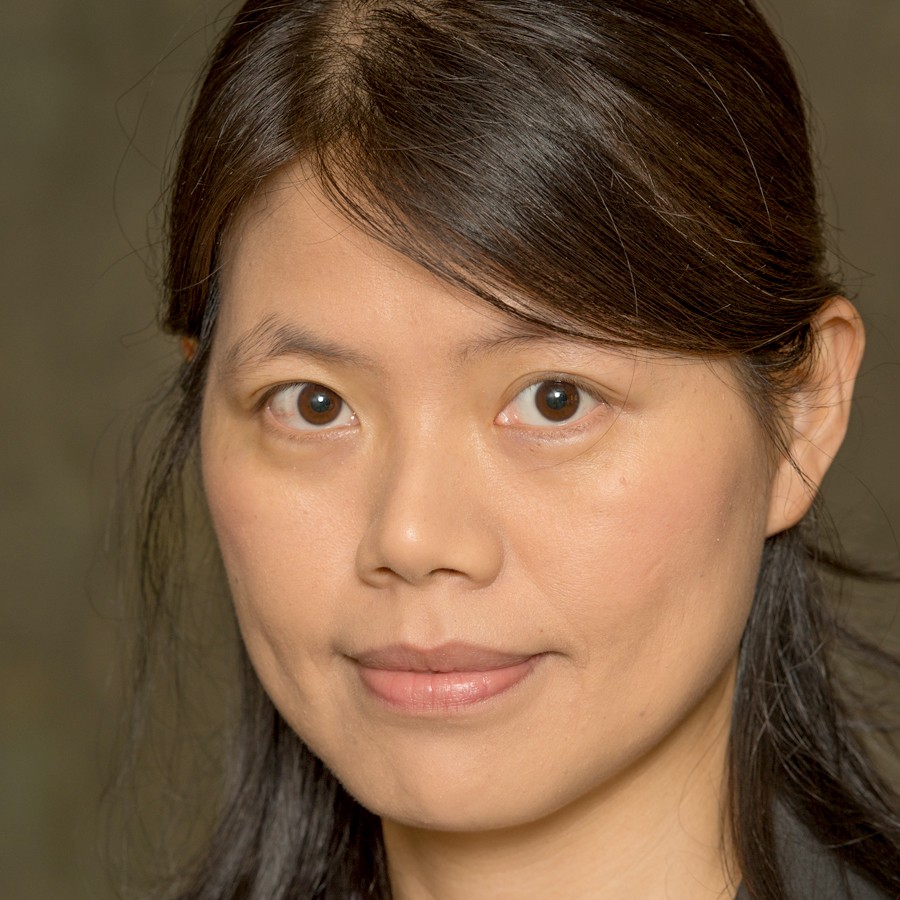 “It is about half of a century since researchers at the SLAC and DESY laboratories began firing electrons into protons. Although they were then thought to be fundamental particles at the center of atoms, these experiments revealed that the proton has a complex internal structure. Subsequent generations of experiments have helped us advance our knowledge of this building block, but many questions remain: What is the size of the proton? What is proton mass made of? What's the origin of the proton's spin? Our research aims to use a theoretical tool, lattice QCD, at national supercomputer facilities to provide answers to these questions by studying the proton's three-dimensional structure. On the educational side, we propose to develop a lattice-QCD course at the undergraduate level with a flipped classroom. Our effort will be spent breaking down difficult research-level lattice-QCD problems into achievable milestones that will be accessible to undergraduates, advancing their programming skills by applying their basic modeling knowledge to real and recent research data. Class materials, such as videos, pre-class and in-class assignments, and homework will be made available to the public.”
“It is about half of a century since researchers at the SLAC and DESY laboratories began firing electrons into protons. Although they were then thought to be fundamental particles at the center of atoms, these experiments revealed that the proton has a complex internal structure. Subsequent generations of experiments have helped us advance our knowledge of this building block, but many questions remain: What is the size of the proton? What is proton mass made of? What's the origin of the proton's spin? Our research aims to use a theoretical tool, lattice QCD, at national supercomputer facilities to provide answers to these questions by studying the proton's three-dimensional structure. On the educational side, we propose to develop a lattice-QCD course at the undergraduate level with a flipped classroom. Our effort will be spent breaking down difficult research-level lattice-QCD problems into achievable milestones that will be accessible to undergraduates, advancing their programming skills by applying their basic modeling knowledge to real and recent research data. Class materials, such as videos, pre-class and in-class assignments, and homework will be made available to the public.”
Song Lin, chemistry, Cornell University – New Catalytic Methods for Enantioselective Electrosynthesis and Introducing Electrosynthesis to College and Graduate Curricula
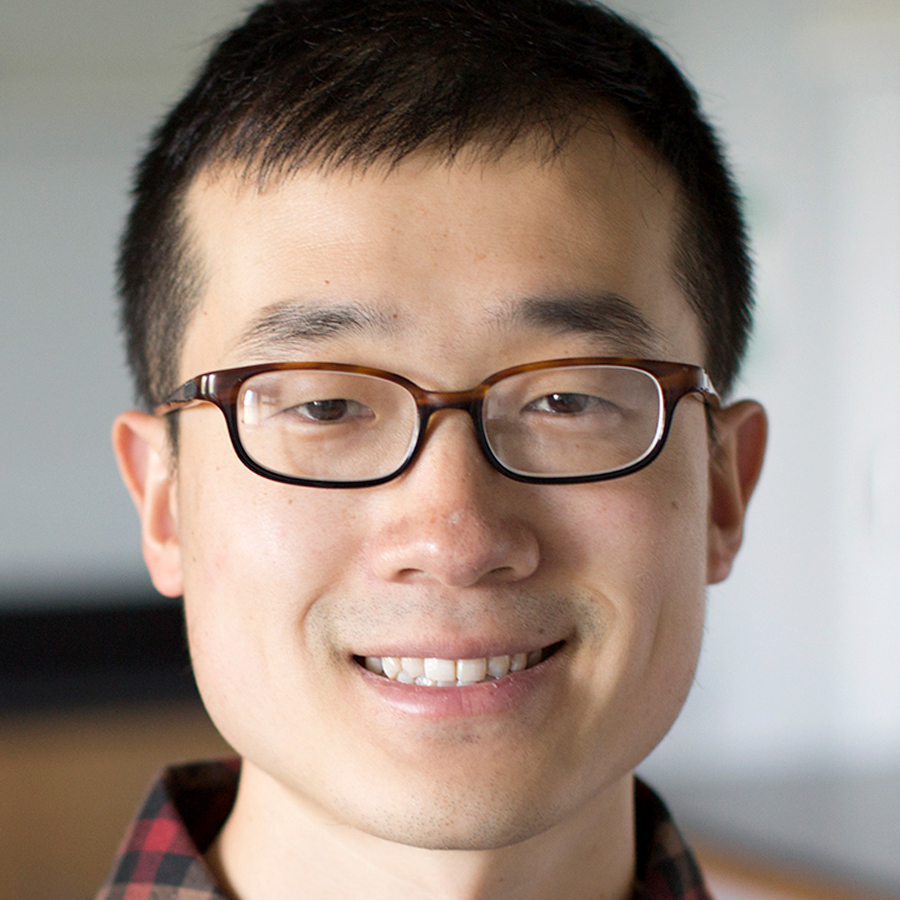 “In contrast to the rapid growth of synthetic electrochemistry in recent years, enantioselective catalytic methods powered by electricity remain rare. Our research will develop new electrocatalysts for the enantioselective hydrocyanation and diazidation of alkenes. The products of these new organic reactions are highly useful synthetic intermediates for the discovery and preparation of medicinally active compounds. Our new methods will provide more efficient and sustainable access to valuable molecules that are pertinent to organic synthesis and drug discovery. In general, the direct use of electrical current to promote organic synthesis represents an emerging research area with broad impact on science on both fundamental and practical levels. In the educational plan, we aim to address an important deficiency in our chemistry curriculum, namely synthetic electrochemistry. We will incorporate electrochemistry in both graduate- and undergraduate-level courses and discuss it in the context of synthetic applications that are directly relevant to chemical research and daily life. These new teaching endeavors will not only emphasize the concept of sustainability and green chemistry to the students but also expose them to interdisciplinary science that is increasing important in today’s scientific innovation.”
“In contrast to the rapid growth of synthetic electrochemistry in recent years, enantioselective catalytic methods powered by electricity remain rare. Our research will develop new electrocatalysts for the enantioselective hydrocyanation and diazidation of alkenes. The products of these new organic reactions are highly useful synthetic intermediates for the discovery and preparation of medicinally active compounds. Our new methods will provide more efficient and sustainable access to valuable molecules that are pertinent to organic synthesis and drug discovery. In general, the direct use of electrical current to promote organic synthesis represents an emerging research area with broad impact on science on both fundamental and practical levels. In the educational plan, we aim to address an important deficiency in our chemistry curriculum, namely synthetic electrochemistry. We will incorporate electrochemistry in both graduate- and undergraduate-level courses and discuss it in the context of synthetic applications that are directly relevant to chemical research and daily life. These new teaching endeavors will not only emphasize the concept of sustainability and green chemistry to the students but also expose them to interdisciplinary science that is increasing important in today’s scientific innovation.”
Britt F. Lundgren, astronomy, University of North Carolina Asheville – Shedding Light on Star Formation Driven Galaxy Outflows across Cosmic Time
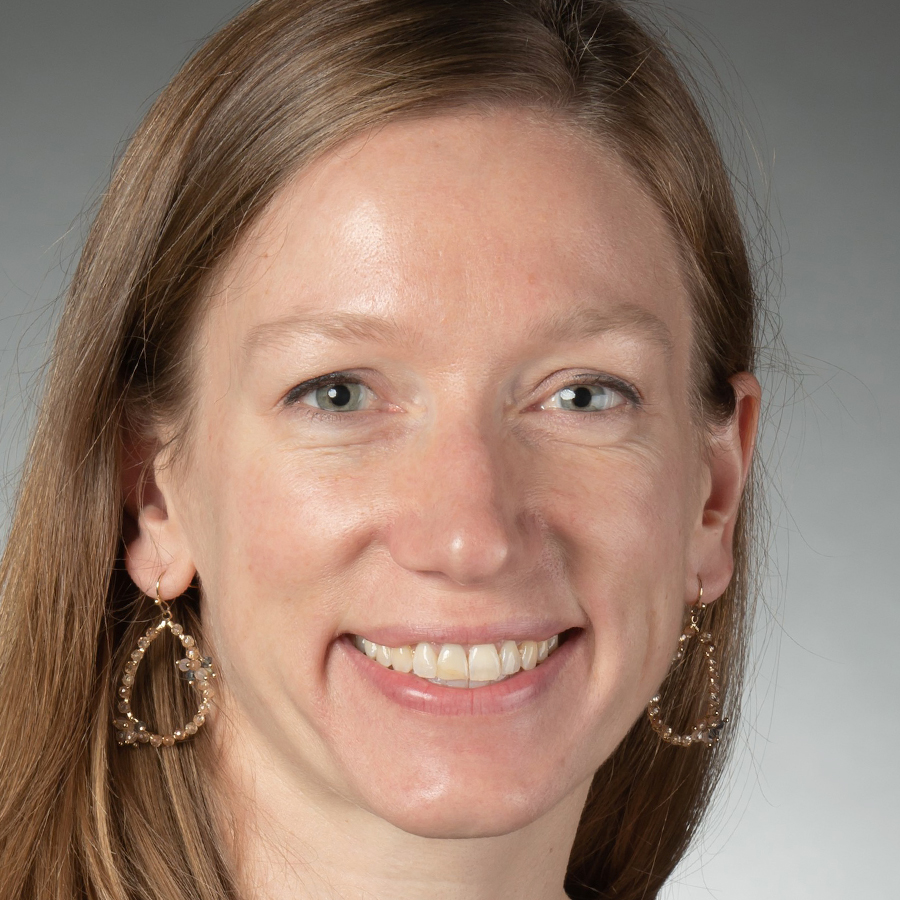 “Galaxies like our own Milky Way are surrounded by immense halos of diffuse gas. Through a variety of dynamic physical processes, this gas can be accreted, expelled, recycled, heated or cooled, and under the right conditions it can fuel the formation of new stars. My research focuses on improving our understanding of how galaxies grow and change over billions of years as a result of these processes. I use quasars (extremely luminous regions in the centers of some distant galaxies) to backlight fainter, less-distant galaxies and reveal the properties and distribution of gas in their surrounding halos. Combining spectra from the Sloan Digital Sky Survey, infrared imaging from the Hubble Space Telescope, and radio observations from the Very Large Array, I work to match the properties of the detected gas to other measurable properties of the host galaxies, and test theoretical simulations that predict how the stellar and gaseous properties of galaxies co-evolve. I am also partnering with scientists at Johns Hopkins University and St. Andrews University in Scotland to develop a freely available computational astronomy curriculum hosted at SciServer.org. It is designed to improve computational and data literacy of students in introductory astronomy courses and lower the technological barriers that often preclude students from becoming involved in authentic astronomy research early in their college careers.”
“Galaxies like our own Milky Way are surrounded by immense halos of diffuse gas. Through a variety of dynamic physical processes, this gas can be accreted, expelled, recycled, heated or cooled, and under the right conditions it can fuel the formation of new stars. My research focuses on improving our understanding of how galaxies grow and change over billions of years as a result of these processes. I use quasars (extremely luminous regions in the centers of some distant galaxies) to backlight fainter, less-distant galaxies and reveal the properties and distribution of gas in their surrounding halos. Combining spectra from the Sloan Digital Sky Survey, infrared imaging from the Hubble Space Telescope, and radio observations from the Very Large Array, I work to match the properties of the detected gas to other measurable properties of the host galaxies, and test theoretical simulations that predict how the stellar and gaseous properties of galaxies co-evolve. I am also partnering with scientists at Johns Hopkins University and St. Andrews University in Scotland to develop a freely available computational astronomy curriculum hosted at SciServer.org. It is designed to improve computational and data literacy of students in introductory astronomy courses and lower the technological barriers that often preclude students from becoming involved in authentic astronomy research early in their college careers.”
Elisabetta Matsumoto, physics, Georgia Institute of Technology – Knotty Knits: Using Topological Constraints to Program Geometry and Elastic Response in Knitted Textiles with Lattice Defects
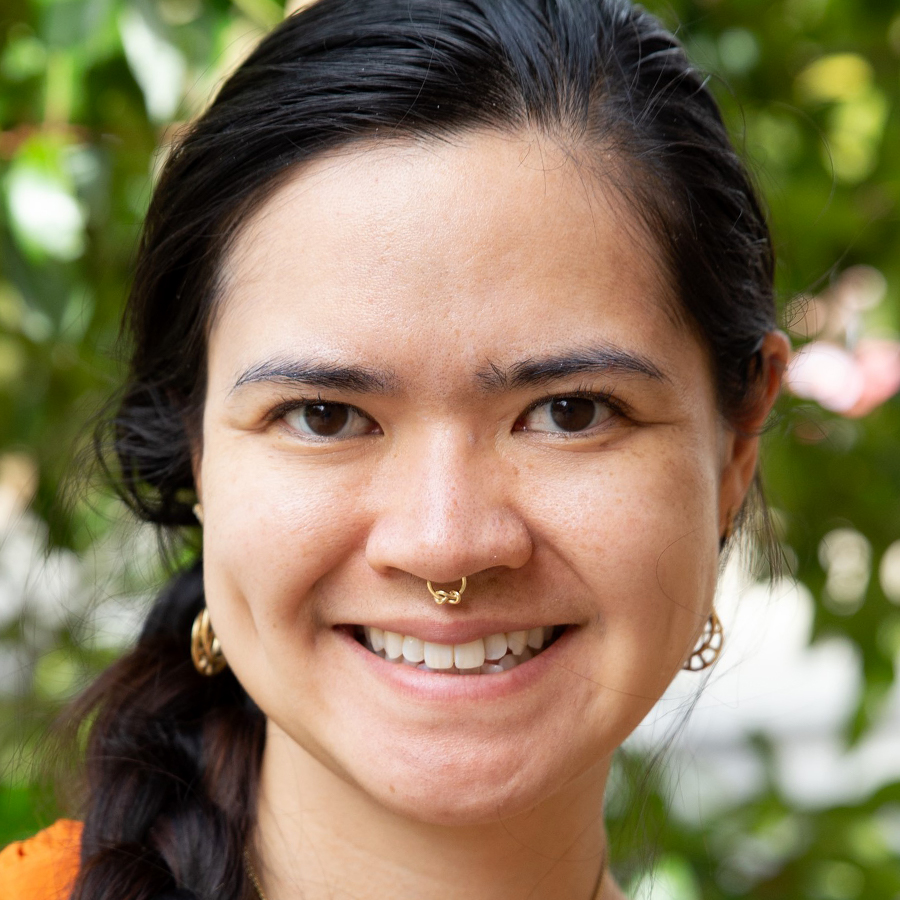 “The art of making textiles is one of humankind’s oldest technologies, yet remarkably little is known about the mechanical properties of these ubiquitous materials. Knits, in particular, have very unique behavior, since tiny changes to the stitches can result in large-scale differences in elasticity. In this proposal, I take the condensed matter perspective and view textiles as a square lattice of entangled curves. The mechanics that emerge result both from the lattice structure – and topological defects therein – as well as the geometry and topology of the knitted stitches themselves. These can be combined to create bespoke materials with designer geometry and elasticity. In this project, we will augment our theoretical studies of knits by using real-time 3D imaging techniques to visualize the relationship between geometry, topology and elasticity in knits. My educational project will use virtual reality to help students visualize vector fields and vector calculus. This 3D visualization will help students who often find it difficult to translate between a 2D textbook and an innately 3D vector field.”
“The art of making textiles is one of humankind’s oldest technologies, yet remarkably little is known about the mechanical properties of these ubiquitous materials. Knits, in particular, have very unique behavior, since tiny changes to the stitches can result in large-scale differences in elasticity. In this proposal, I take the condensed matter perspective and view textiles as a square lattice of entangled curves. The mechanics that emerge result both from the lattice structure – and topological defects therein – as well as the geometry and topology of the knitted stitches themselves. These can be combined to create bespoke materials with designer geometry and elasticity. In this project, we will augment our theoretical studies of knits by using real-time 3D imaging techniques to visualize the relationship between geometry, topology and elasticity in knits. My educational project will use virtual reality to help students visualize vector fields and vector calculus. This 3D visualization will help students who often find it difficult to translate between a 2D textbook and an innately 3D vector field.”
Sharon R. Neufeldt, chemistry, Montana State University – Combined Experimental and Computational Approach to Improving Nickel and Palladium-Catalyzed Cross-Couplings
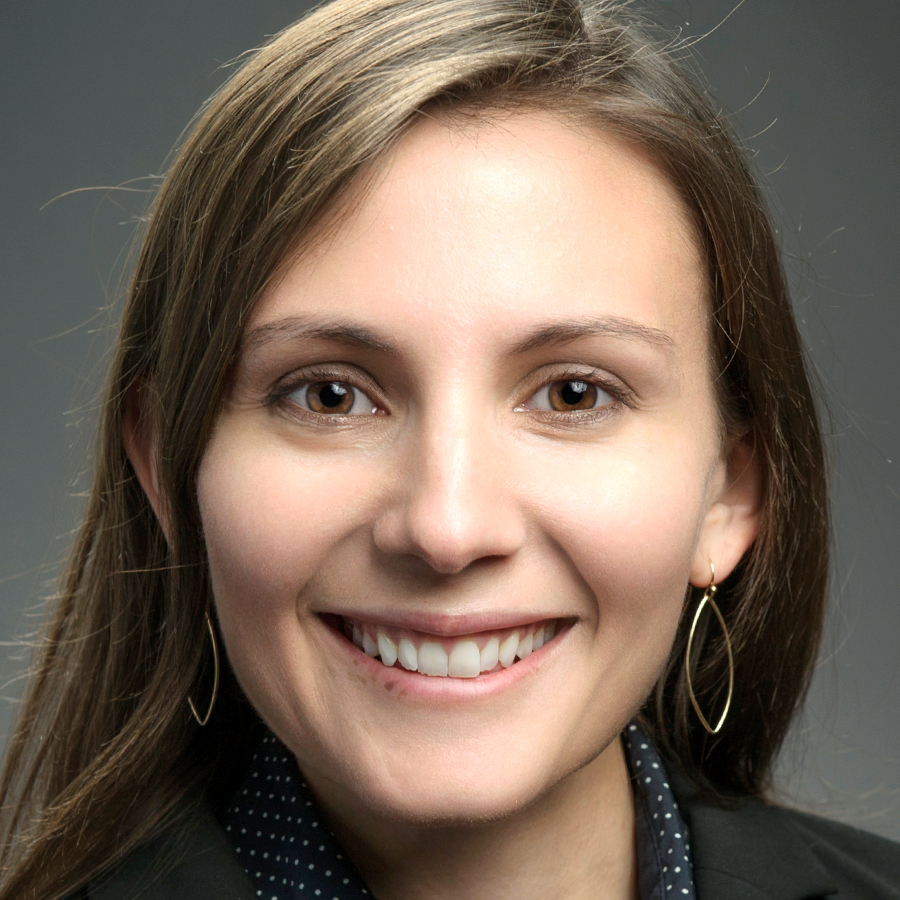 “Palladium-catalyzed cross-coupling reactions are a widely used approach to forming carbon-carbon bonds during the synthesis of organic molecules. However, these reactions face challenges related to site selectivity and to the requirement for expensive or wasteful reactants. The research supported by this award will use a combined experimental and computational approach to address these challenges by studying the role of solvents on selectivity, the use of more earth-abundant transition metal catalysts, and the use of atom-economical reactants derived from phenol. This research will lead to more efficient methods for selective carbon-carbon bond formation in organic synthesis and inform the future development of new selective catalysts. In addition, I will be developing a molecular modeling research course at Montana State University to help address the critical need for research opportunities for the university's rapidly growing population of chemistry and biochemistry majors. These students will engage in computational research, some of which will support our efforts to find solutions to cross-coupling challenges.”
“Palladium-catalyzed cross-coupling reactions are a widely used approach to forming carbon-carbon bonds during the synthesis of organic molecules. However, these reactions face challenges related to site selectivity and to the requirement for expensive or wasteful reactants. The research supported by this award will use a combined experimental and computational approach to address these challenges by studying the role of solvents on selectivity, the use of more earth-abundant transition metal catalysts, and the use of atom-economical reactants derived from phenol. This research will lead to more efficient methods for selective carbon-carbon bond formation in organic synthesis and inform the future development of new selective catalysts. In addition, I will be developing a molecular modeling research course at Montana State University to help address the critical need for research opportunities for the university's rapidly growing population of chemistry and biochemistry majors. These students will engage in computational research, some of which will support our efforts to find solutions to cross-coupling challenges.”
Glen D. O'Neil, chemistry, Montclair State University – Neurotransmitter Detection using Light-Addressable Electrochemical Sensors: Investigating the Role of Metal Morphology and Coverage on Sensor Response using Scanning Electrochemical Methods
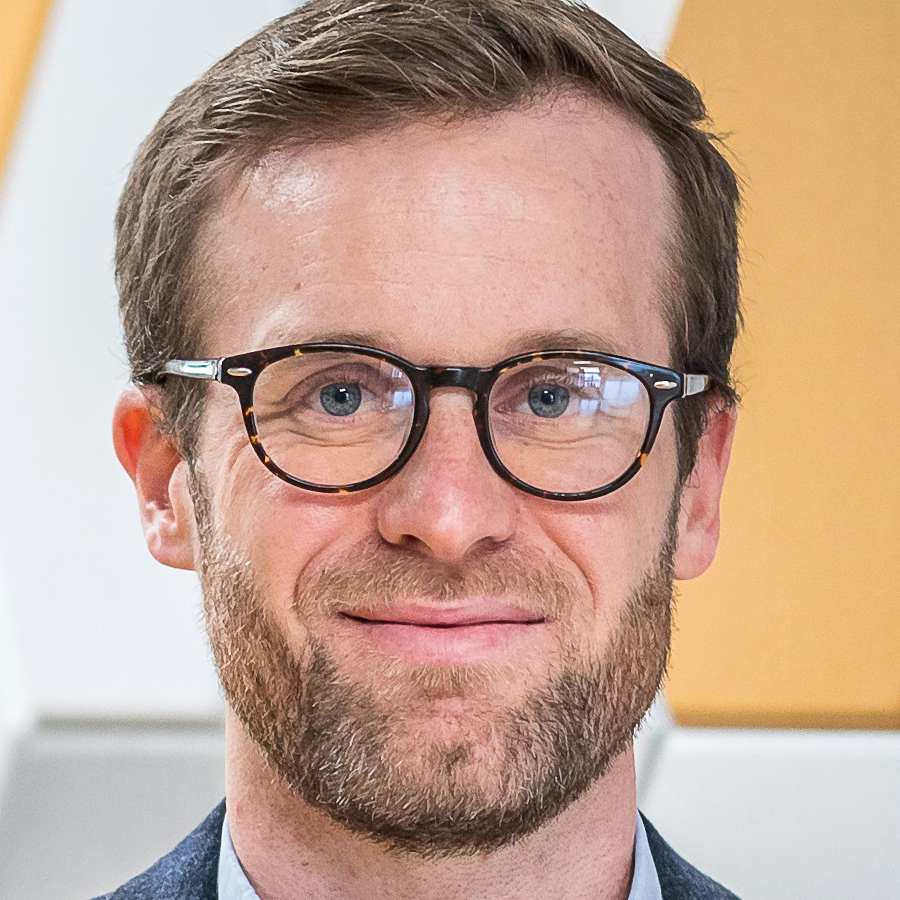 “Neurotransmitters are messaging molecules used by the brain to send and receive information. Images of chemical neurotransmission at sub-cellular resolution are difficult to obtain and are not able to provide the temporal resolution required to observe individual synaptic events. Such images would provide a more complete understanding of chemical neurotransmission by providing detailed flux maps of neurotransmitter dynamics in the area(s) around cells. Light-addressable electrochemical sensors show promise for performing chemical images at single cells. The objective of this project is to perform a detailed study of the photoelectrochemistry of light-addressable electrochemical sensors for low concentrations of neurotransmitters using scanning electrochemical cell microscopy (SECCM) and scanning photocurrent microscopy (SPCM). The educational component of the project seeks to improve retention of two-year community college transfer in 300- and 400-level coursework through additional course infrastructure, community building, and support. A successful outcome will improve graduation rates, decrease rates of withdrawals, Ds and Fs, and improve the four-year college experience of community college transfer students in chemistry and biochemistry.”
“Neurotransmitters are messaging molecules used by the brain to send and receive information. Images of chemical neurotransmission at sub-cellular resolution are difficult to obtain and are not able to provide the temporal resolution required to observe individual synaptic events. Such images would provide a more complete understanding of chemical neurotransmission by providing detailed flux maps of neurotransmitter dynamics in the area(s) around cells. Light-addressable electrochemical sensors show promise for performing chemical images at single cells. The objective of this project is to perform a detailed study of the photoelectrochemistry of light-addressable electrochemical sensors for low concentrations of neurotransmitters using scanning electrochemical cell microscopy (SECCM) and scanning photocurrent microscopy (SPCM). The educational component of the project seeks to improve retention of two-year community college transfer in 300- and 400-level coursework through additional course infrastructure, community building, and support. A successful outcome will improve graduation rates, decrease rates of withdrawals, Ds and Fs, and improve the four-year college experience of community college transfer students in chemistry and biochemistry.”
Peter P. Orth, physics, Iowa State University – Probing Fractionalization and Entanglement in Quantum Spin Liquids: Theory of Two-dimensional Spectroscopy
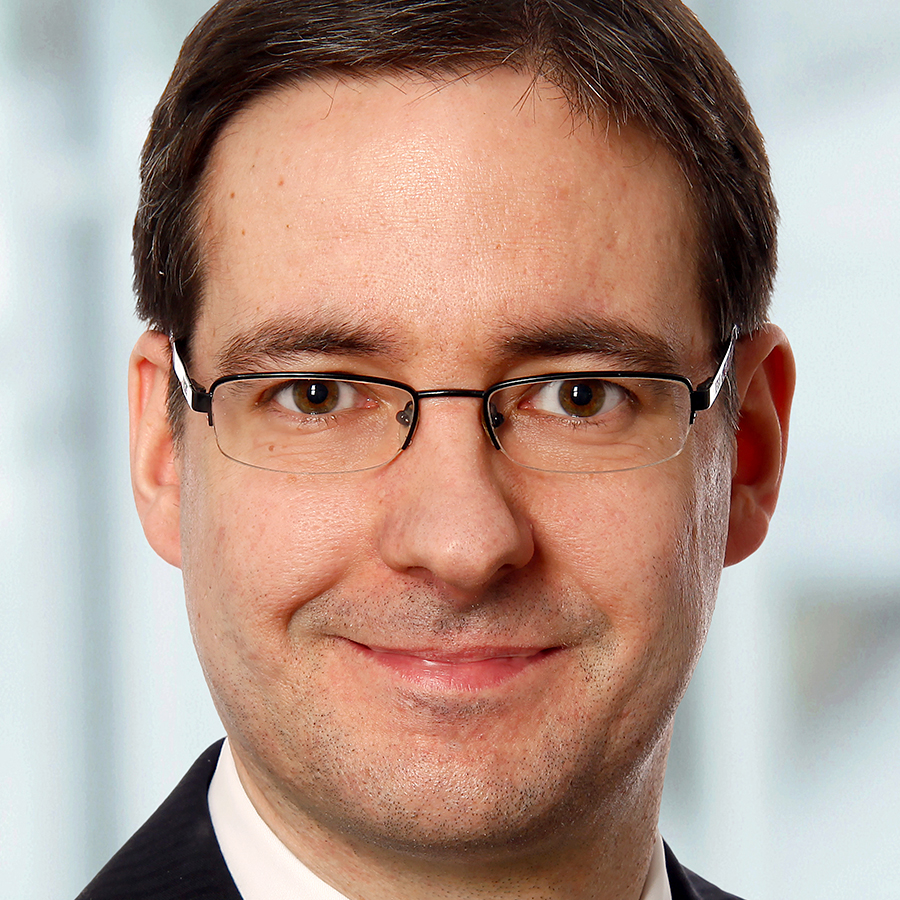 “Quantum spin liquids form when competing interactions among the microscopic magnetic moments suppress any type of magnetic order. Unlike in an ordered state such as a ferromagnet, where all moments align in the lowest energy configuration, a spin liquid corresponds to a quantum superposition of many different magnetic spin configurations. This peculiar state is characterized by long-range entanglement and fractionalized excitations, properties that make quantum spin liquids technologically important as potential platforms for topological quantum computation. Due to their lack of local magnetic order, however, they are notoriously hard to detect in experiments. This proposal describes new schemes for identifying characteristic experimental signatures of quantum spin liquids by theoretically investigating non-linear magnetic response functions of various spin models. The results will be directly relevant to two-dimensional coherent spectroscopy (2DCS) measurements of magnetic materials. A broader aspect of the proposed work is that it lays the foundation to theoretically explore the wider applicability of 2DCS to probe correlations in quantum materials such as magnets, superconductors and topological materials. The goal of our educational plan is to increase retention and recruitment of students from underrepresented groups in STEM fields by designing a transdisciplinary team-based learning course on quantum computing integrated with a learning community.”
“Quantum spin liquids form when competing interactions among the microscopic magnetic moments suppress any type of magnetic order. Unlike in an ordered state such as a ferromagnet, where all moments align in the lowest energy configuration, a spin liquid corresponds to a quantum superposition of many different magnetic spin configurations. This peculiar state is characterized by long-range entanglement and fractionalized excitations, properties that make quantum spin liquids technologically important as potential platforms for topological quantum computation. Due to their lack of local magnetic order, however, they are notoriously hard to detect in experiments. This proposal describes new schemes for identifying characteristic experimental signatures of quantum spin liquids by theoretically investigating non-linear magnetic response functions of various spin models. The results will be directly relevant to two-dimensional coherent spectroscopy (2DCS) measurements of magnetic materials. A broader aspect of the proposed work is that it lays the foundation to theoretically explore the wider applicability of 2DCS to probe correlations in quantum materials such as magnets, superconductors and topological materials. The goal of our educational plan is to increase retention and recruitment of students from underrepresented groups in STEM fields by designing a transdisciplinary team-based learning course on quantum computing integrated with a learning community.”
Cedric Owens, chemistry, Chapman University – Constructing a Better Nitrogenase by Uncovering Protein-protein Interactions That Protect the Enzyme and Expand its Chemistry
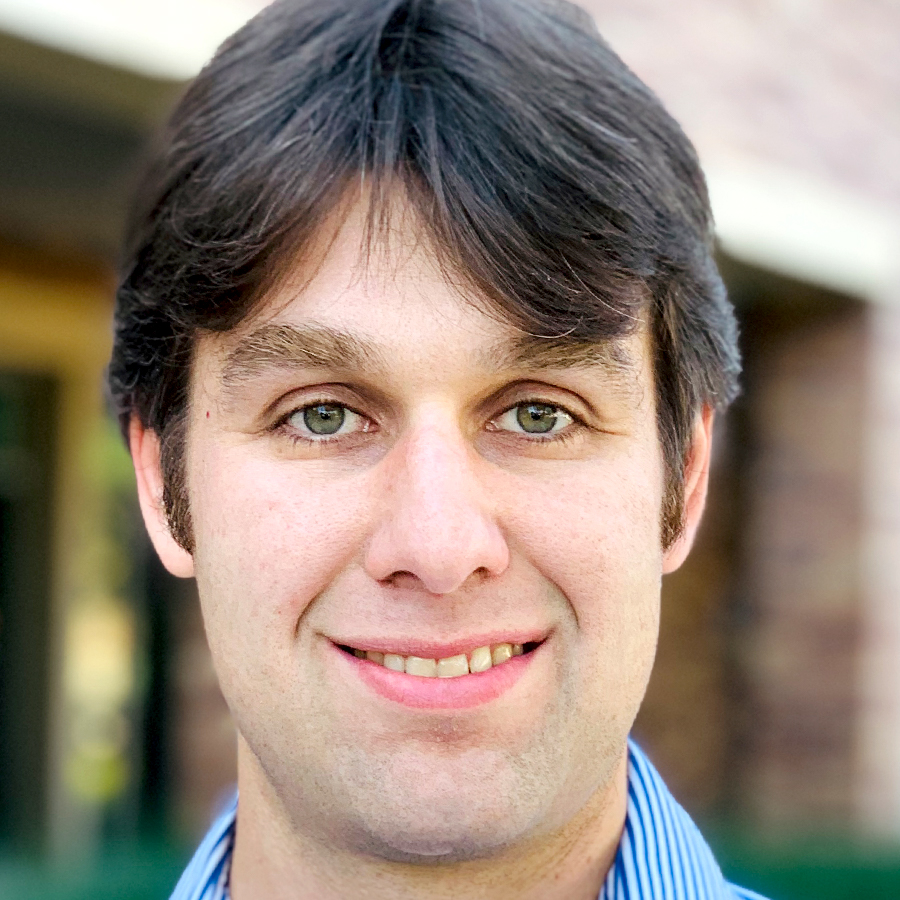 “The bacterial enzyme nitrogenase catalyzes the extraordinarily challenging conversion of nitrogen gas (N2) into the plant nutrient ammonia (NH3) at room temperature. This process is agriculturally important since lack of NH3 limits plant growth. The soil environment, however, represents a seemingly hostile place for nitrogenase to operate. Common environmental gases such as oxygen (O2) and carbon monoxide (CO) disable nitrogenase, and cool temperatures slow it down. To prevent nitrogenase from being shut down, bacteria have developed countermeasures to protect the enzyme. However, many of these defense mechanisms are poorly understood. Our research focus is to determine how bacteria enable nitrogenase to keep running under unfavorable conditions. We hypothesize that a small protein called CowN participates in both the bacterial response to cold stress and protection against CO inhibition. CowN’s structure is sensitive to changes in temperature and we are currently studying if CowN enhances nitrogenase activity in cold conditions. The broader significance of our investigation is that knowing how nitrogenase is protected from inhibition may enable the design of bacteria that have enhanced NH3 production capabilities. Our educational aims are to implement a teaching laboratory in physical biochemistry, allowing students to learn physical chemistry by conducting experiments that use modern physical methods in biochemistry.”
“The bacterial enzyme nitrogenase catalyzes the extraordinarily challenging conversion of nitrogen gas (N2) into the plant nutrient ammonia (NH3) at room temperature. This process is agriculturally important since lack of NH3 limits plant growth. The soil environment, however, represents a seemingly hostile place for nitrogenase to operate. Common environmental gases such as oxygen (O2) and carbon monoxide (CO) disable nitrogenase, and cool temperatures slow it down. To prevent nitrogenase from being shut down, bacteria have developed countermeasures to protect the enzyme. However, many of these defense mechanisms are poorly understood. Our research focus is to determine how bacteria enable nitrogenase to keep running under unfavorable conditions. We hypothesize that a small protein called CowN participates in both the bacterial response to cold stress and protection against CO inhibition. CowN’s structure is sensitive to changes in temperature and we are currently studying if CowN enhances nitrogenase activity in cold conditions. The broader significance of our investigation is that knowing how nitrogenase is protected from inhibition may enable the design of bacteria that have enhanced NH3 production capabilities. Our educational aims are to implement a teaching laboratory in physical biochemistry, allowing students to learn physical chemistry by conducting experiments that use modern physical methods in biochemistry.”
Dennis V. Perepelitsa, physics, University of Colorado Boulder – Next-Generation Experimental Probes of Hot and Dense Nuclear Matter
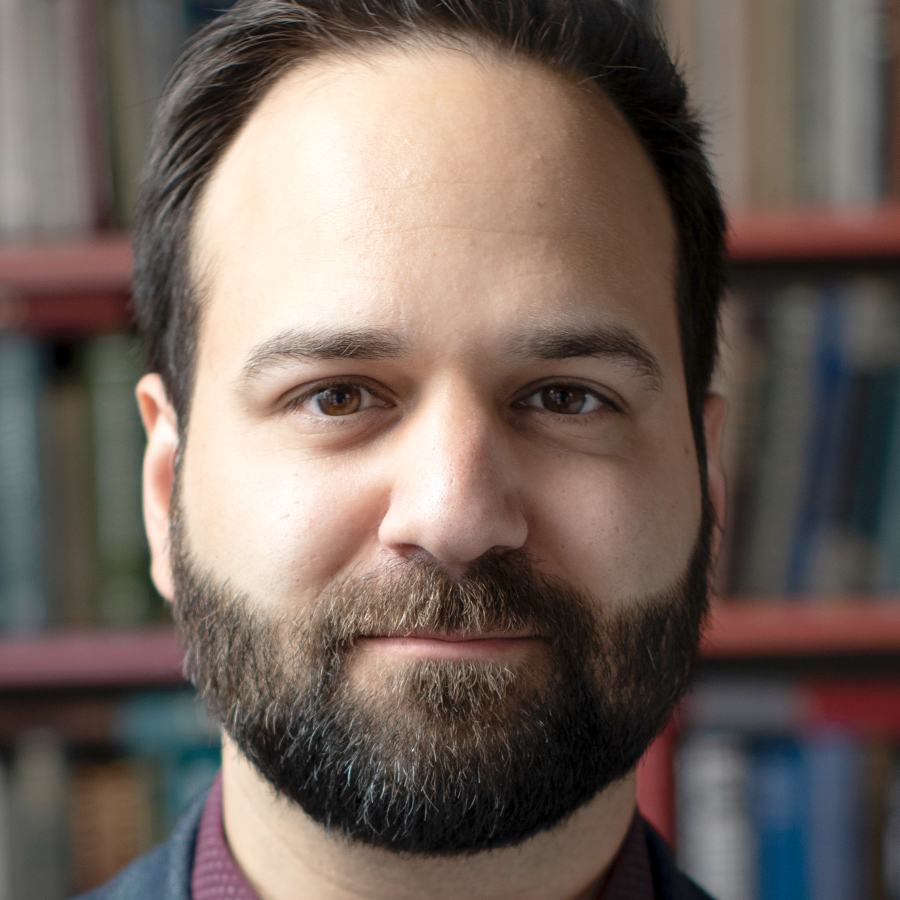 “My research takes place at large particle colliders around the world, including the Large Hadron Collider near Geneva, Switzerland. At these facilities, heavy nuclei such as lead or gold are accelerated to near the speed of light and brought into a head-on collision. These collisions create samples of an ultra-hot and ultra-dense Quark-Gluon Plasma, an exotic phase of matter in which quarks and gluons are freed from their normal state of being bound in protons and neutrons. Studying the Quark-Gluon Plasma allows my group to learn about the dynamics of the forces that keep protons and neutrons together, and can even shed light into the evolution of the early universe shortly after the Big Bang. My research will address questions about the strong nuclear interaction between quarks and gluons with an innovative program at the Large Hadron Collider that capitalizes on rare, experimentally advantageous channels and state-of-the-art experiment/theory interfaces. The next generation of Quark-Gluon Plasma research will require young scientists with significant training in technical and computing skills. To address this need, I will create a comprehensive framework of computational physics material for use in upper-division courses, which will be shared with the wider physics-education community.”
“My research takes place at large particle colliders around the world, including the Large Hadron Collider near Geneva, Switzerland. At these facilities, heavy nuclei such as lead or gold are accelerated to near the speed of light and brought into a head-on collision. These collisions create samples of an ultra-hot and ultra-dense Quark-Gluon Plasma, an exotic phase of matter in which quarks and gluons are freed from their normal state of being bound in protons and neutrons. Studying the Quark-Gluon Plasma allows my group to learn about the dynamics of the forces that keep protons and neutrons together, and can even shed light into the evolution of the early universe shortly after the Big Bang. My research will address questions about the strong nuclear interaction between quarks and gluons with an innovative program at the Large Hadron Collider that capitalizes on rare, experimentally advantageous channels and state-of-the-art experiment/theory interfaces. The next generation of Quark-Gluon Plasma research will require young scientists with significant training in technical and computing skills. To address this need, I will create a comprehensive framework of computational physics material for use in upper-division courses, which will be shared with the wider physics-education community.”
Leslie A. Rogers, astronomy, University of Chicago – Searching for Water in Distant Worlds: Connecting the Atmospheric and Bulk Compositions of Sub-Neptune-Size Planets
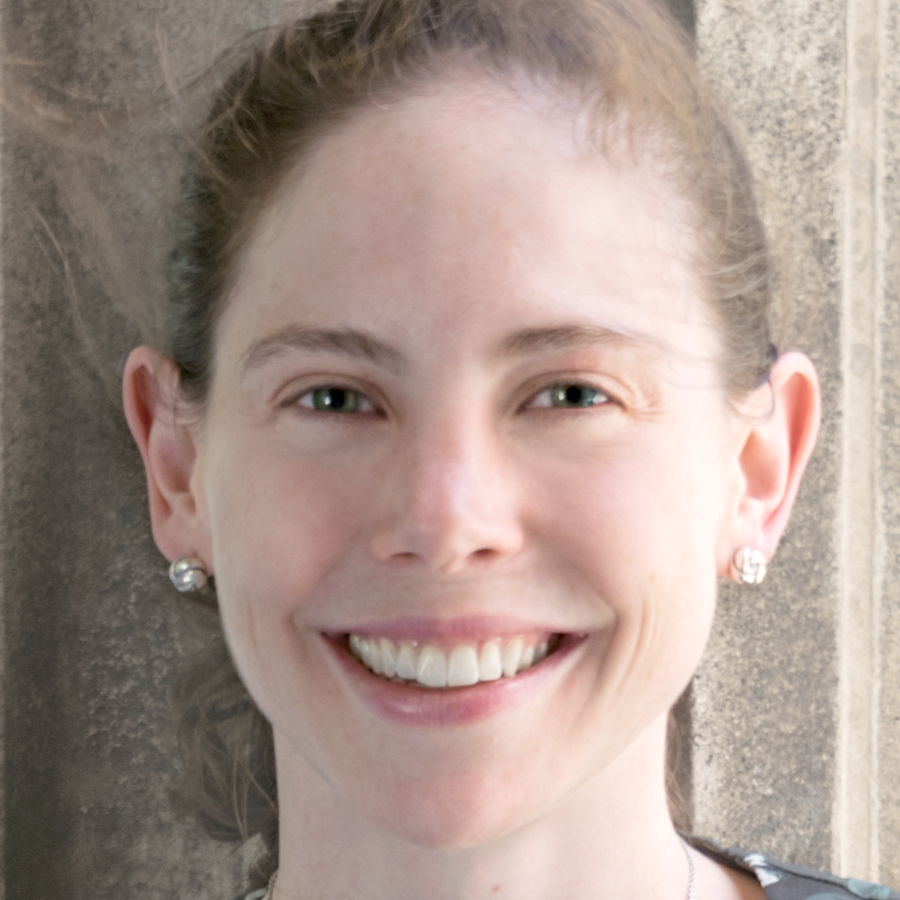 “The abundance of Neptune-size (2 to 6 Earth-Radius) exoplanets (planets outside the Solar System) discovered is a puzzle for planet formation theories. Did these planets form in situ at orbital separations (<0.4 AU) near where they are currently observed, or did they initially form on more distant orbits before later migrating inward toward their host star? The bulk water content of a planet is a powerful tracer of the planet's formation location, relative to the snow line (where water vapor condenses to ice) in the protoplanetary disk. With current transit, radial velocity, and atmospheric spectra observations, however, it is challenging to constrain the fraction of an exoplanet’s total mass contained in astrophysical ices. My research will pursue two novel, complementary approaches to constrain the bulk water content of distant exoplanets. Advancing models of planet interior structure, planet evolution, and population statistics, I will lay the theoretical foundation to extract constraints on planet bulk compositions and formation pathways from atmospheric transmission spectra and the accumulating statistical ensemble of planet mass-radius measurements. I also propose to update a core astronomy course for non-science majors to help students build the mental frameworks to broaden their understanding, make connections within the material uncovered in class, and deepen their appreciation of how scientists think.”
“The abundance of Neptune-size (2 to 6 Earth-Radius) exoplanets (planets outside the Solar System) discovered is a puzzle for planet formation theories. Did these planets form in situ at orbital separations (<0.4 AU) near where they are currently observed, or did they initially form on more distant orbits before later migrating inward toward their host star? The bulk water content of a planet is a powerful tracer of the planet's formation location, relative to the snow line (where water vapor condenses to ice) in the protoplanetary disk. With current transit, radial velocity, and atmospheric spectra observations, however, it is challenging to constrain the fraction of an exoplanet’s total mass contained in astrophysical ices. My research will pursue two novel, complementary approaches to constrain the bulk water content of distant exoplanets. Advancing models of planet interior structure, planet evolution, and population statistics, I will lay the theoretical foundation to extract constraints on planet bulk compositions and formation pathways from atmospheric transmission spectra and the accumulating statistical ensemble of planet mass-radius measurements. I also propose to update a core astronomy course for non-science majors to help students build the mental frameworks to broaden their understanding, make connections within the material uncovered in class, and deepen their appreciation of how scientists think.”
Brenda M. Rubenstein, chemistry, Brown University – Advancing Chemistry through Data Science: Catalyst Design via Data-Enabled Quantum Chemistry and Integrating Data Science into the Chemistry Curriculum
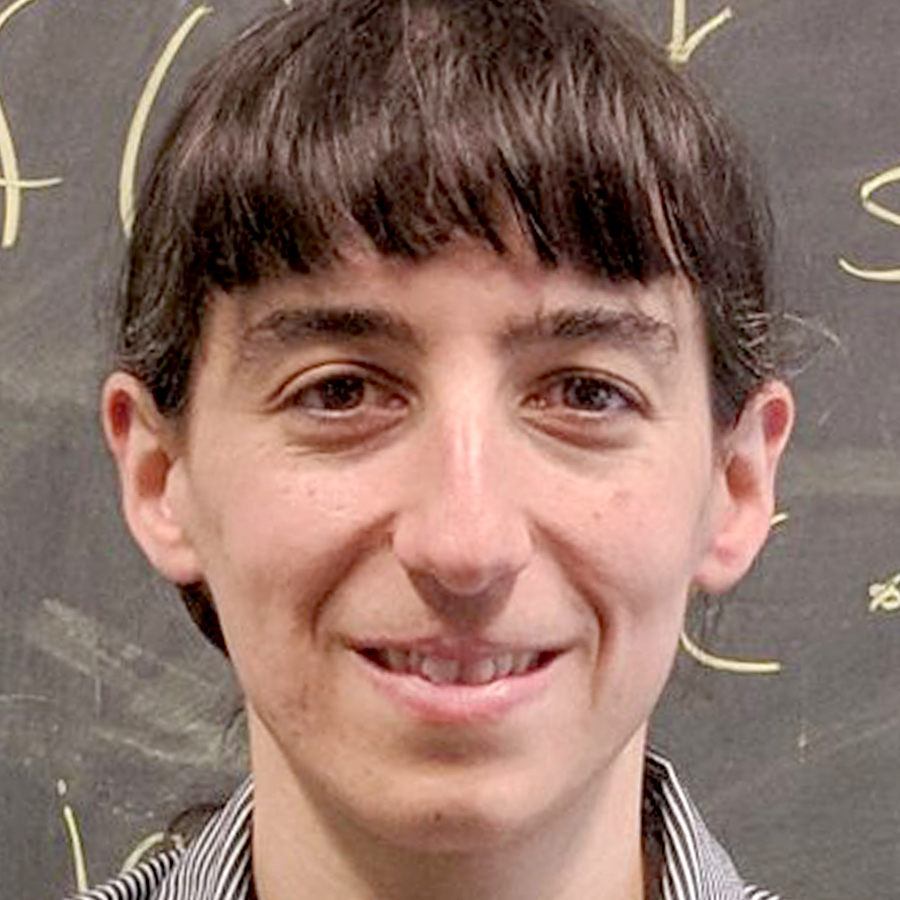 “The tools of data science hold the tantalizing promise of transforming chemistry by accelerating experimental searches for and simulations of new reactions and materials. Nonetheless, data science has yet to be fully leveraged by chemists and remains glaringly absent from modern undergraduate chemistry curricula. My research will harness the power of machine learning to accelerate predictive calculations of early transition metal carbon dioxide reduction catalysts. Little is quantitatively known about the mechanisms that underlie many existing molecular catalysts, making their systematic improvement challenging. Predictions that will facilitate the design of high-affinity, high-selectivity carbon dioxide catalysts will transform our chemical economy by enabling the low-cost production of fuels from their very waste products. As part of my educational proposal, I will also develop a course that fills a growing chasm in modern undergraduate chemistry curricula by teaching chemistry majors critically needed data science and numerical skills. This course will prepare students for the increasingly automated chemistry labs of the future, while also encouraging mathematically minded students to more strongly consider careers in the chemical sciences.”
“The tools of data science hold the tantalizing promise of transforming chemistry by accelerating experimental searches for and simulations of new reactions and materials. Nonetheless, data science has yet to be fully leveraged by chemists and remains glaringly absent from modern undergraduate chemistry curricula. My research will harness the power of machine learning to accelerate predictive calculations of early transition metal carbon dioxide reduction catalysts. Little is quantitatively known about the mechanisms that underlie many existing molecular catalysts, making their systematic improvement challenging. Predictions that will facilitate the design of high-affinity, high-selectivity carbon dioxide catalysts will transform our chemical economy by enabling the low-cost production of fuels from their very waste products. As part of my educational proposal, I will also develop a course that fills a growing chasm in modern undergraduate chemistry curricula by teaching chemistry majors critically needed data science and numerical skills. This course will prepare students for the increasingly automated chemistry labs of the future, while also encouraging mathematically minded students to more strongly consider careers in the chemical sciences.”
Lorenzo Sironi, astronomy, Columbia University – To B or Not to B: The Birth and Death of Magnetic Fields in the Universe
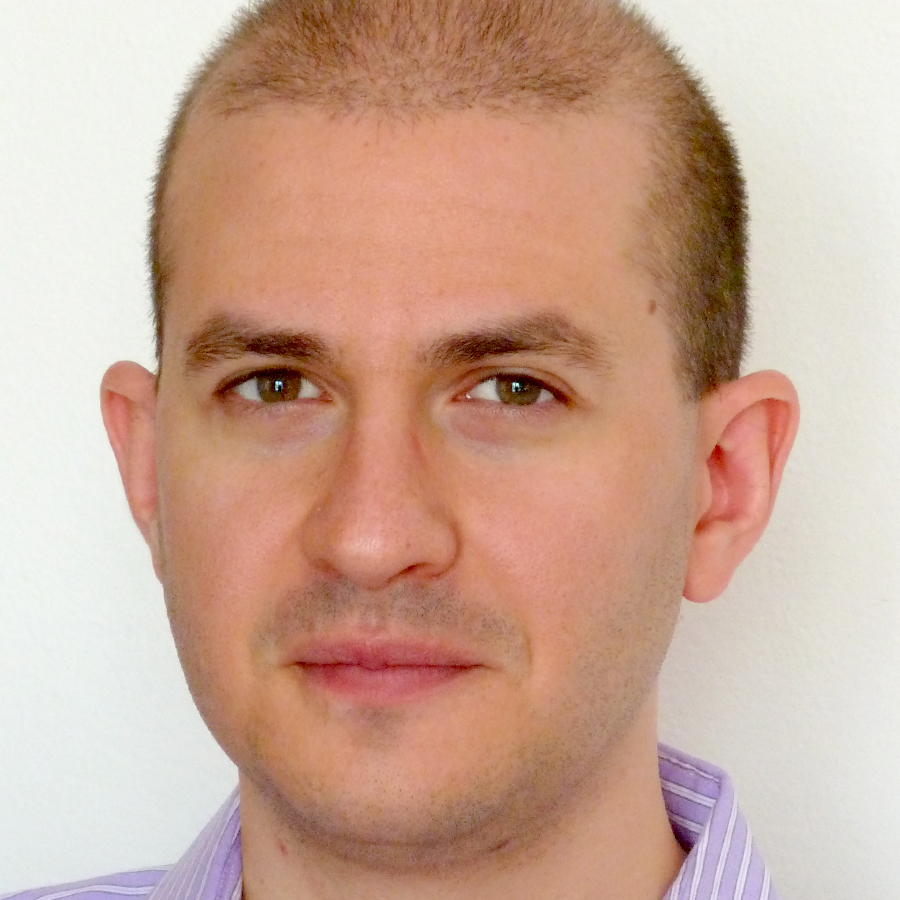 “In astronomy, the role of magnetic fields (B-fields) is often neglected. Yet, they can power the brightest and highest-energy emission from, e.g., relativistic black hole jets or binary neutron stars mergers, that have been recently detected by LIGO. As of today, there exists no framework capable of concurrently capturing the behavior of charged particles and magnetic fields on the smallest scales — which ultimately controls B-field generation and decay — and the large-scale evolution of astrophysical sources. Yet, such strategies are routinely employed in the weather-modeling community, and the time is ripe for employing similar methods in plasma astrophysics. My research will develop a multi-scale approach to solve long-standing questions in astronomy and cosmology: [1] Where do B-fields in our Universe come from? What is the mechanism behind their origin/birth? [2] Can the death/dissipation of B-fields power the brightest flares from jets, black hole accretion flows, and potentially neutron star mergers? In parallel, my educational plan will introduce Columbia undergraduate students – both science and non-science majors – to the art of looking at reality with quantitative eyes, helping them develop the scientific fluency they need to become well-rounded leaders in a world driven by science and technology.”
“In astronomy, the role of magnetic fields (B-fields) is often neglected. Yet, they can power the brightest and highest-energy emission from, e.g., relativistic black hole jets or binary neutron stars mergers, that have been recently detected by LIGO. As of today, there exists no framework capable of concurrently capturing the behavior of charged particles and magnetic fields on the smallest scales — which ultimately controls B-field generation and decay — and the large-scale evolution of astrophysical sources. Yet, such strategies are routinely employed in the weather-modeling community, and the time is ripe for employing similar methods in plasma astrophysics. My research will develop a multi-scale approach to solve long-standing questions in astronomy and cosmology: [1] Where do B-fields in our Universe come from? What is the mechanism behind their origin/birth? [2] Can the death/dissipation of B-fields power the brightest flares from jets, black hole accretion flows, and potentially neutron star mergers? In parallel, my educational plan will introduce Columbia undergraduate students – both science and non-science majors – to the art of looking at reality with quantitative eyes, helping them develop the scientific fluency they need to become well-rounded leaders in a world driven by science and technology.”
David A. Strubbe, physics, University of California, Merced – Light-induced Structural Dynamics in Materials: New Theoretical Insight into Ultrafast Phenomena
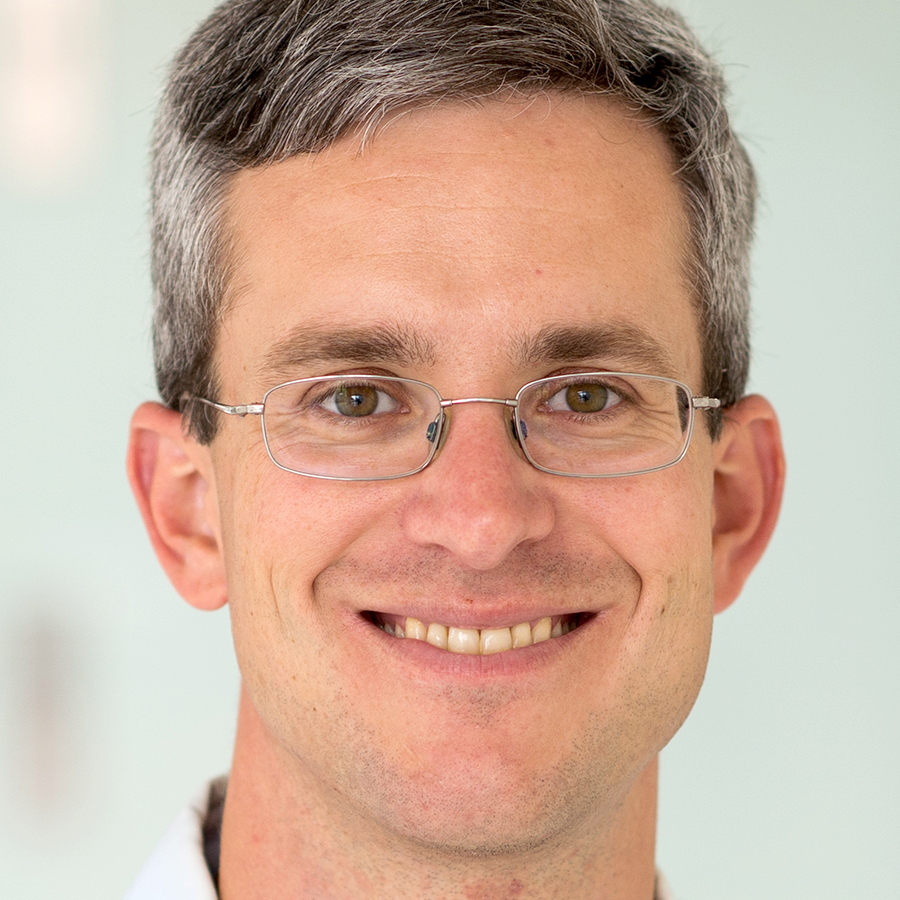 “Two central phenomena studied in condensed matter physics (CMP) are how light is absorbed by materials, and how atoms within a material move around. Typically, these phenomena have been studied separately, but new experimental tools have allowed studying processes in which absorption of light induces motion of atoms, on extremely short time scales. I have developed new methods for theoretical calculations of these processes using supercomputers. This project will advance the methods and the computer programs used in these calculations, finding ways of making these calculations faster and more accurate. We will apply these methods to study the properties of materials, focusing on two categories of great recent interest: (1) defects, such as a missing atom or atom of a different type in a solid, which can serve as components in future quantum computers, and (2) two-dimensional materials, such as graphite, that are made up of layers of atoms, and have applications in new electronic or optical technologies. Because advances in CMP have enabled realistic computations of materials to be fast and accessible enough for undergraduates, I will create a Course Undergraduate Research Experience (CURE) for a CMP class in which students will do web-based calculations of properties of a set of new materials, bringing the excitement of research into the undergraduate classroom.”
“Two central phenomena studied in condensed matter physics (CMP) are how light is absorbed by materials, and how atoms within a material move around. Typically, these phenomena have been studied separately, but new experimental tools have allowed studying processes in which absorption of light induces motion of atoms, on extremely short time scales. I have developed new methods for theoretical calculations of these processes using supercomputers. This project will advance the methods and the computer programs used in these calculations, finding ways of making these calculations faster and more accurate. We will apply these methods to study the properties of materials, focusing on two categories of great recent interest: (1) defects, such as a missing atom or atom of a different type in a solid, which can serve as components in future quantum computers, and (2) two-dimensional materials, such as graphite, that are made up of layers of atoms, and have applications in new electronic or optical technologies. Because advances in CMP have enabled realistic computations of materials to be fast and accessible enough for undergraduates, I will create a Course Undergraduate Research Experience (CURE) for a CMP class in which students will do web-based calculations of properties of a set of new materials, bringing the excitement of research into the undergraduate classroom.”
Claire P. Till, chemistry, Humboldt State University – Scandium and Iron: Parallels in Chemical Reactivity, and Reducing the Opportunity Gap in the HSU Chemistry Department and Beyond
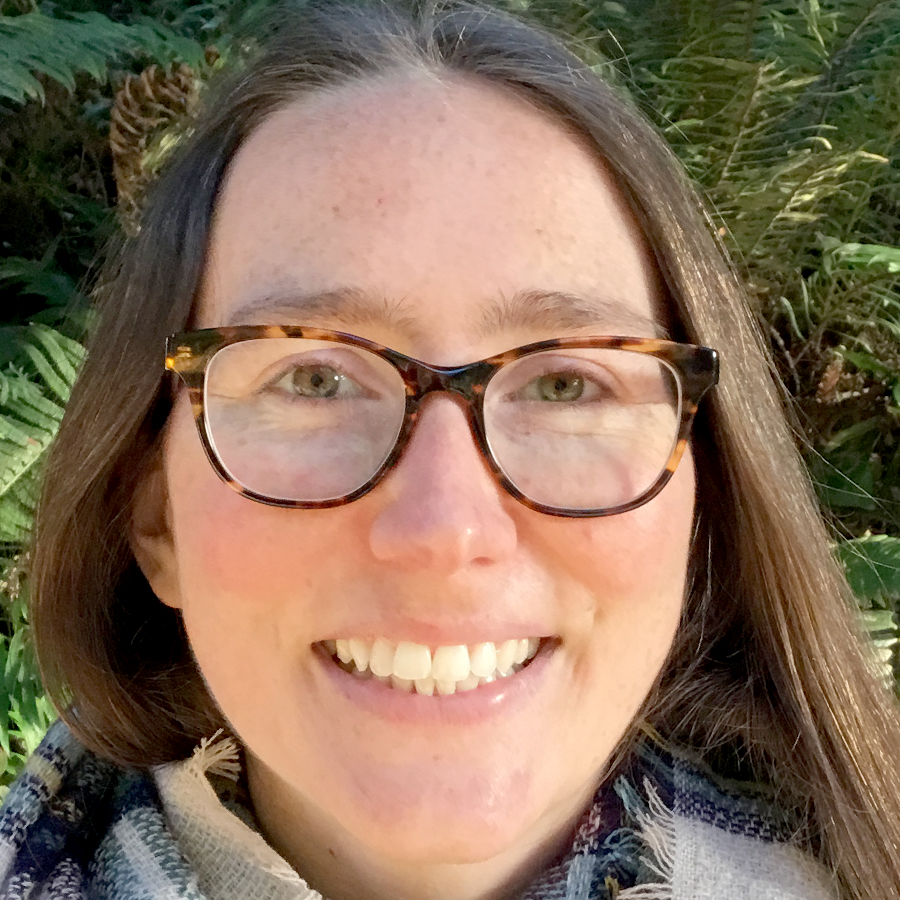 “Iron is an essential micronutrient for phytoplankton, and has oceanic chemistry so complex that despite decades of study there are still mysteries remaining about how it cycles through the ocean. Looking at the periodic table, there is no reason to expect that scandium and iron would have chemical similarities, yet we see striking parallels in their concentration distributions in the ocean. I want to find out what's driving those parallels. My students and I will study this question by following a well-established iron pathway from rivers to coastal surface ocean waters, and see where scandium follows suit with iron and where it diverges. I expect that this process will both illuminate new aspects of scandium chemistry as well as provide new insights into oceanic iron cycling. My educational goal is to reduce the opportunity gap by incorporating best practices for multi-cultural group work into my classes, and by developing and providing materials that target students’ expectancy of success and value of the material for both analytical and general chemistry classes. Once these materials are tested within my classroom and the department, they will be disseminated more broadly through The Analytical Sciences Digital Library site.”
“Iron is an essential micronutrient for phytoplankton, and has oceanic chemistry so complex that despite decades of study there are still mysteries remaining about how it cycles through the ocean. Looking at the periodic table, there is no reason to expect that scandium and iron would have chemical similarities, yet we see striking parallels in their concentration distributions in the ocean. I want to find out what's driving those parallels. My students and I will study this question by following a well-established iron pathway from rivers to coastal surface ocean waters, and see where scandium follows suit with iron and where it diverges. I expect that this process will both illuminate new aspects of scandium chemistry as well as provide new insights into oceanic iron cycling. My educational goal is to reduce the opportunity gap by incorporating best practices for multi-cultural group work into my classes, and by developing and providing materials that target students’ expectancy of success and value of the material for both analytical and general chemistry classes. Once these materials are tested within my classroom and the department, they will be disseminated more broadly through The Analytical Sciences Digital Library site.”
Jesus M. Velazquez, chemistry, University of California, Davis – Achieving Energy Conversion Functionality through Compositional Modification: The Role of Metal Promotion in Chalcogenide Frameworks
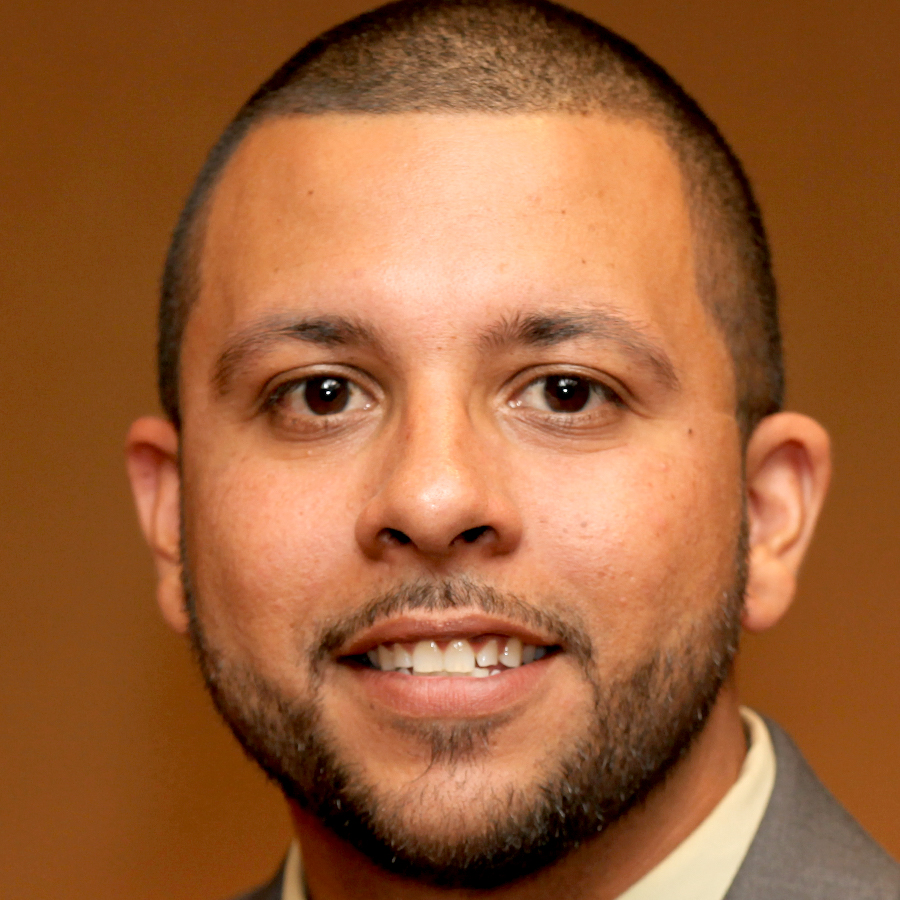 “Development of novel catalysts that can facilitate aqueous chemical transformations of small-molecule feedstocks into viable chemicals and fuels is an urgent imperative for energy conversion and storage. The Cottrell Scholar award will support development of novel electrocatalyst materials and semiconductors that can facilitate chemical transformations of atmospheric pollutants such as carbon monoxide and carbon dioxide into value-added chemicals and fuels. Our approach in designing functional catalysts emphasizes the elucidation of composition-structure-reactivity relationships in compositionally tunable frameworks that are all comprised of Earth-abundant and non-toxic elements. Achieving fundamental understanding of the interplay between active site species in synergistic electrocatalytic systems will facilitate the design and synthesis of precisely tailored materials that can stabilize critical reaction intermediates in electroreduction reactions, thereby guiding reactions along trajectories toward specific value-added chemicals. This award also directly supports an education plan that meets the specific needs of a steadily increasing population of underrepresented minority and first-generation chemistry students. Engaging research topics in energy and sustainability will form the foundation from which our program will seek to stimulate student interest in STEM.”
“Development of novel catalysts that can facilitate aqueous chemical transformations of small-molecule feedstocks into viable chemicals and fuels is an urgent imperative for energy conversion and storage. The Cottrell Scholar award will support development of novel electrocatalyst materials and semiconductors that can facilitate chemical transformations of atmospheric pollutants such as carbon monoxide and carbon dioxide into value-added chemicals and fuels. Our approach in designing functional catalysts emphasizes the elucidation of composition-structure-reactivity relationships in compositionally tunable frameworks that are all comprised of Earth-abundant and non-toxic elements. Achieving fundamental understanding of the interplay between active site species in synergistic electrocatalytic systems will facilitate the design and synthesis of precisely tailored materials that can stabilize critical reaction intermediates in electroreduction reactions, thereby guiding reactions along trajectories toward specific value-added chemicals. This award also directly supports an education plan that meets the specific needs of a steadily increasing population of underrepresented minority and first-generation chemistry students. Engaging research topics in energy and sustainability will form the foundation from which our program will seek to stimulate student interest in STEM.”
Jessica K. Werk, astronomy, University of Washington – The Observational Signatures of Cosmic Gas Flows in a Hydrodynamic Framework
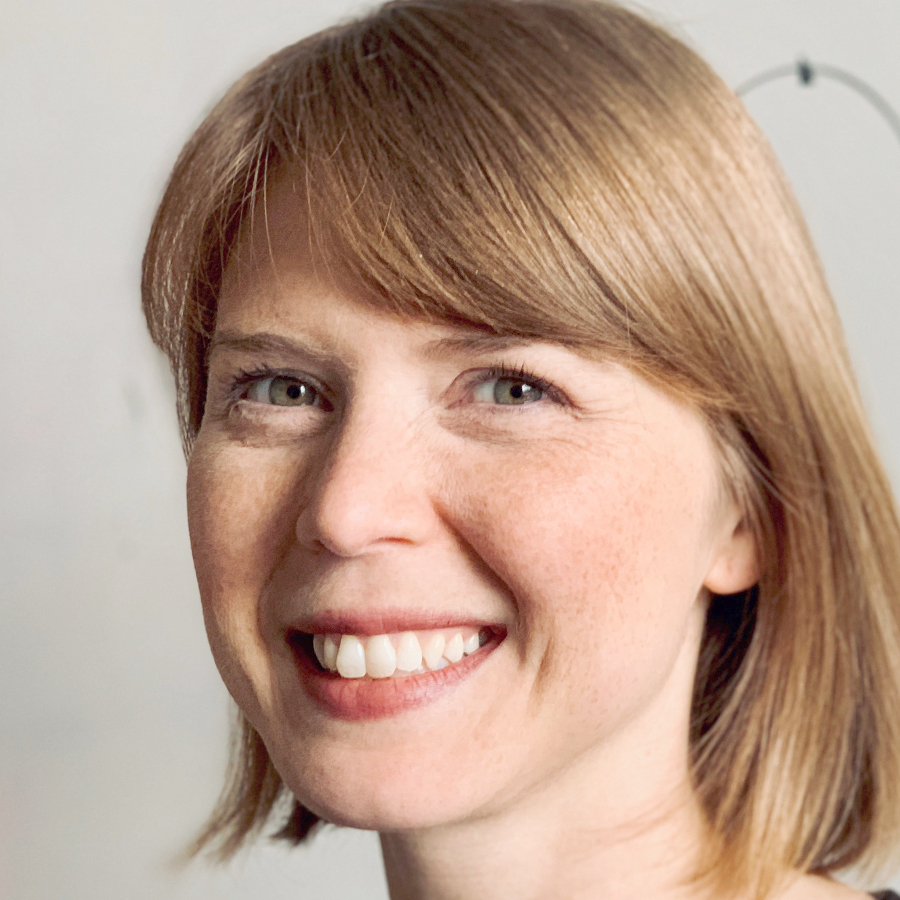 “The galactic gaseous atmosphere is as essential to setting the conditions in our Milky Way as our planet's atmosphere is for sustaining life on Earth. As on Earth, local galactic phenomena can have global atmospheric consequences. This work will use both theoretical and observational methods to examine how local phenomena tied to a galaxy's supermassive black hole influence its extended galactic atmosphere. The galaxy simulations feature novel implementations of black hole feedback and growth, while the planned analysis will generate a set of observable predictions for how the gaseous halo properties scale with the black hole physics. My educational plan includes the development of a holistic advising framework for astronomy undergraduates, more and more of whom report being from groups that are historically underrepresented in STEM. It will facilitate community-building exercises, a series of workshops focused metacognitive learning strategies and mental health, and peer-mentoring groups. The goal is to build a community of student scholars who support each other in the face of both failure and success, and who will be empowered to seek solutions to any problems they encounter.”
“The galactic gaseous atmosphere is as essential to setting the conditions in our Milky Way as our planet's atmosphere is for sustaining life on Earth. As on Earth, local galactic phenomena can have global atmospheric consequences. This work will use both theoretical and observational methods to examine how local phenomena tied to a galaxy's supermassive black hole influence its extended galactic atmosphere. The galaxy simulations feature novel implementations of black hole feedback and growth, while the planned analysis will generate a set of observable predictions for how the gaseous halo properties scale with the black hole physics. My educational plan includes the development of a holistic advising framework for astronomy undergraduates, more and more of whom report being from groups that are historically underrepresented in STEM. It will facilitate community-building exercises, a series of workshops focused metacognitive learning strategies and mental health, and peer-mentoring groups. The goal is to build a community of student scholars who support each other in the face of both failure and success, and who will be empowered to seek solutions to any problems they encounter.”
